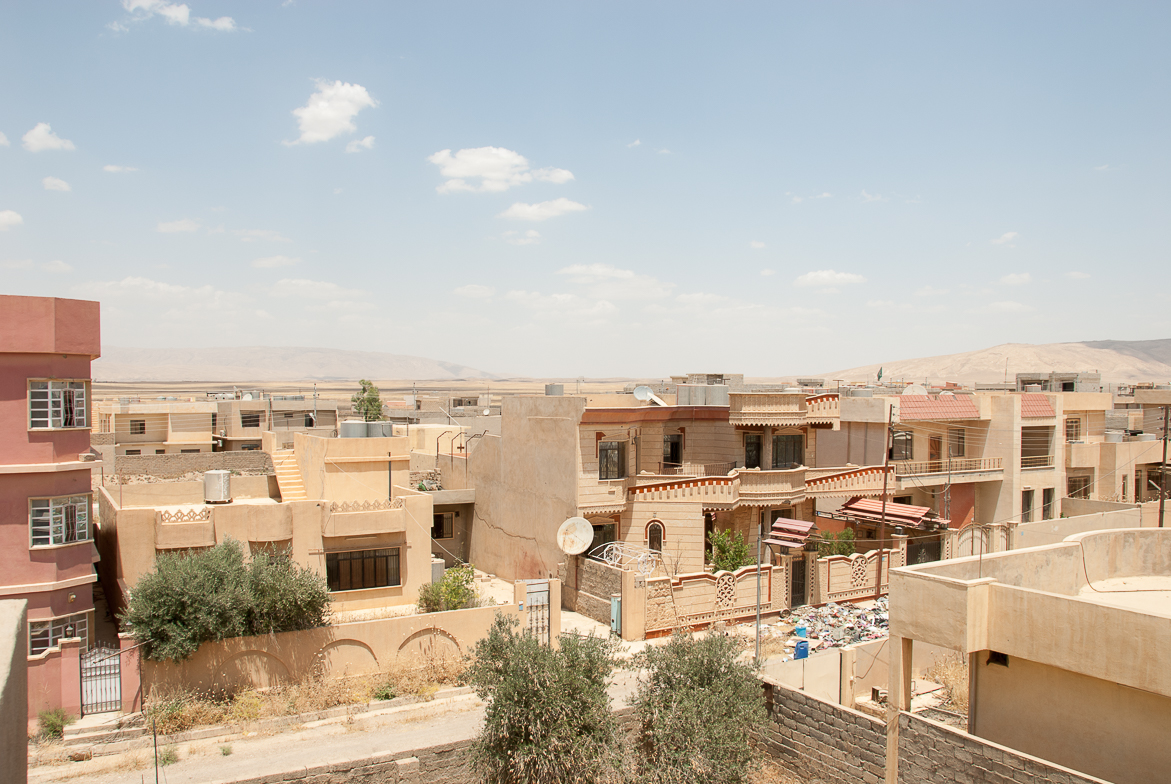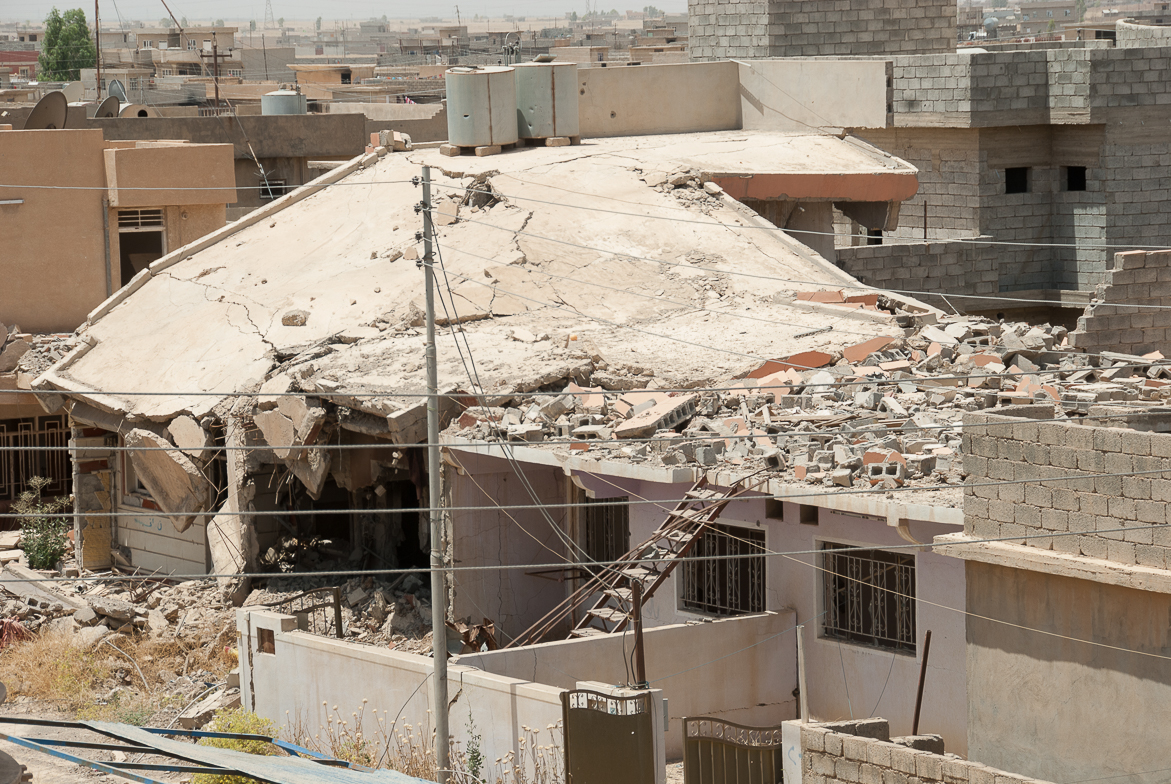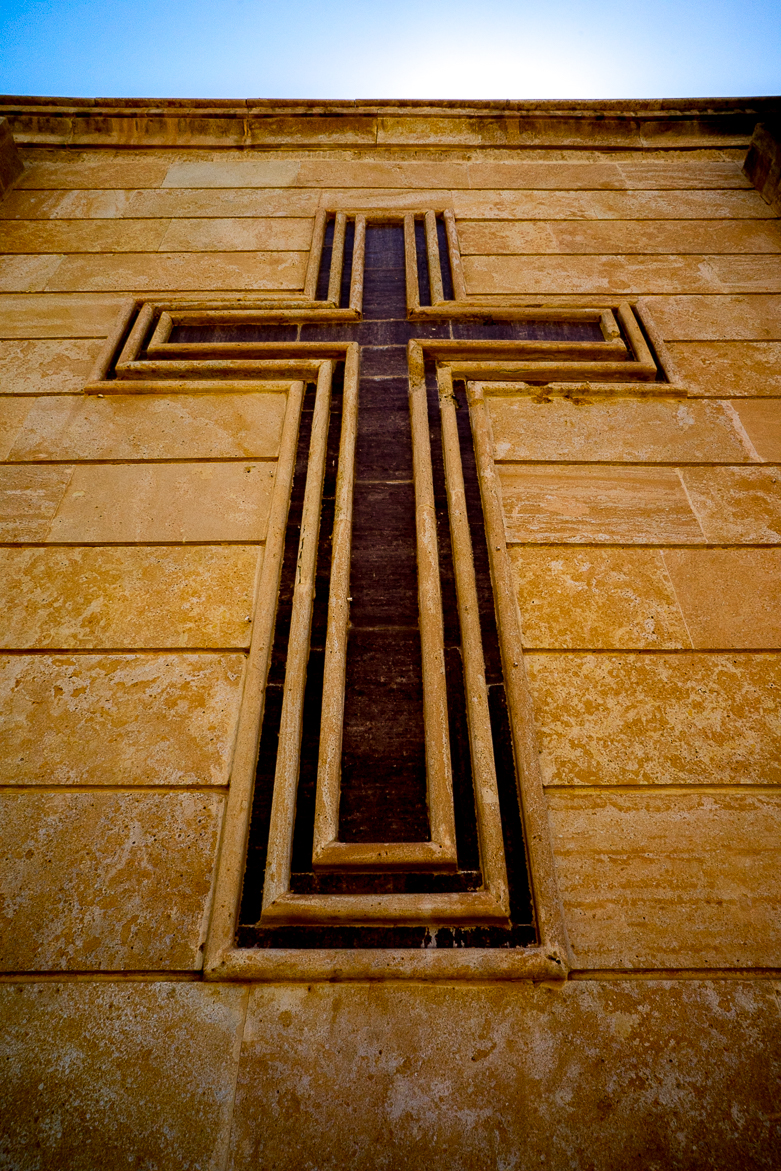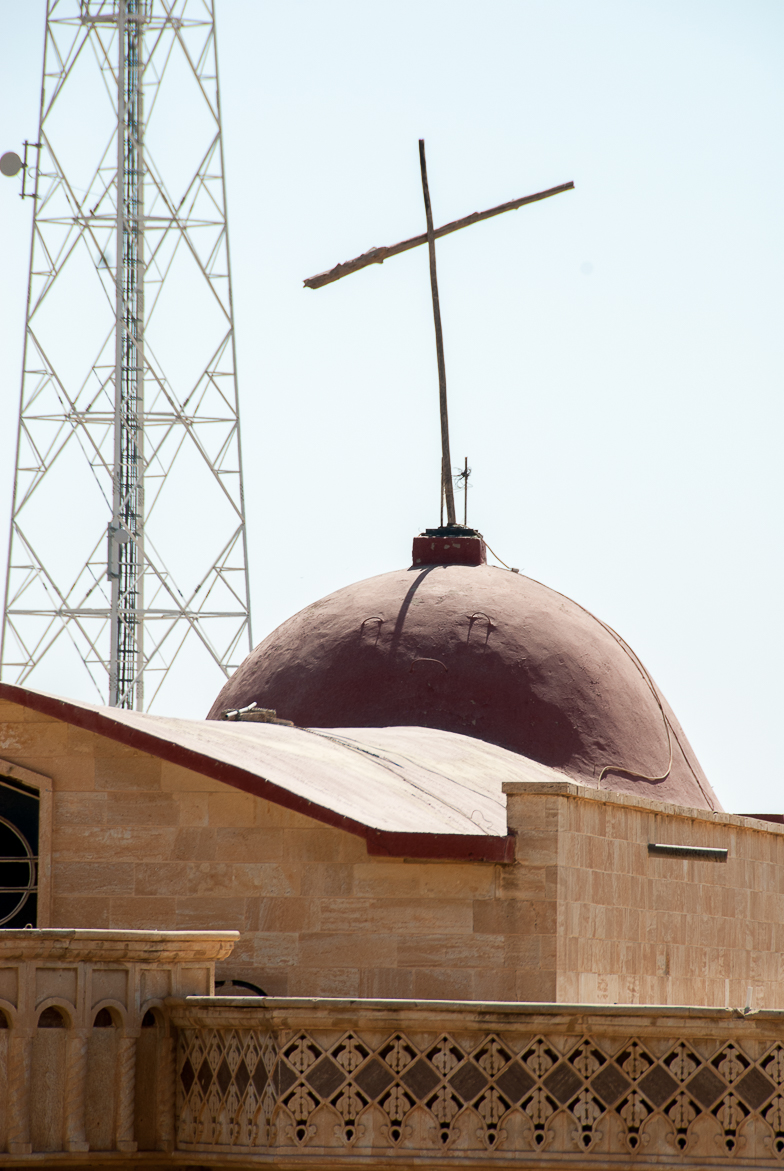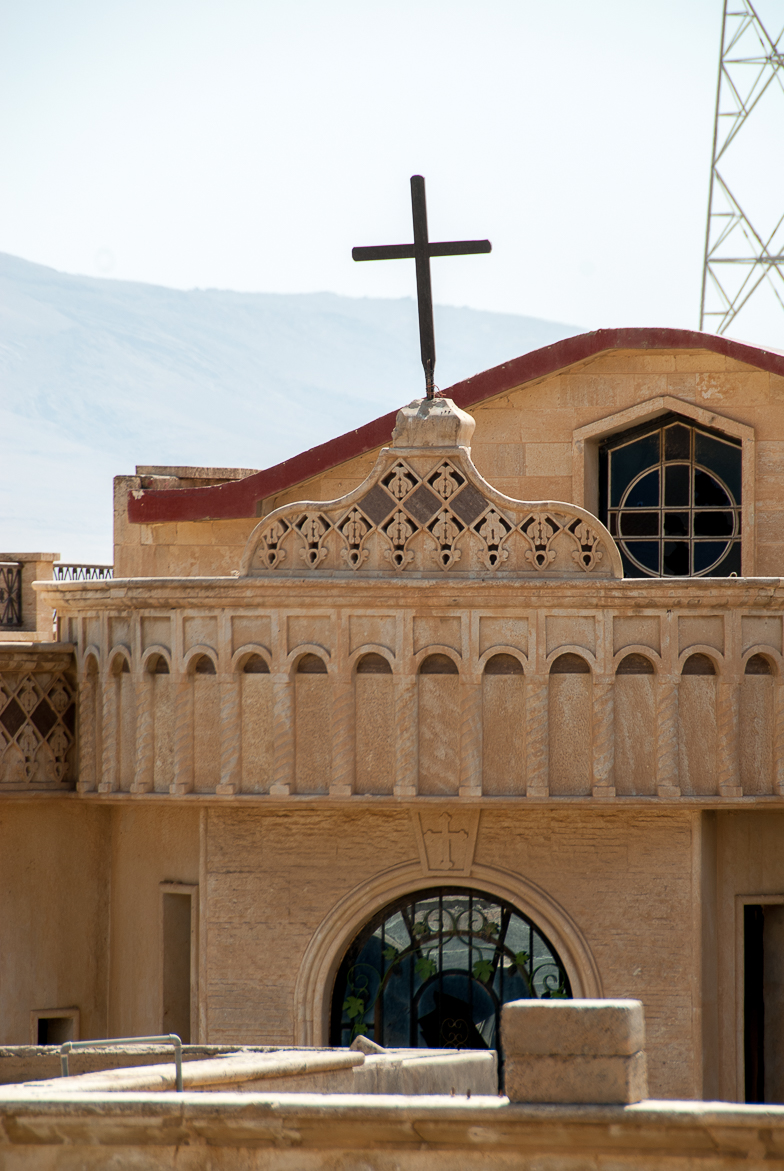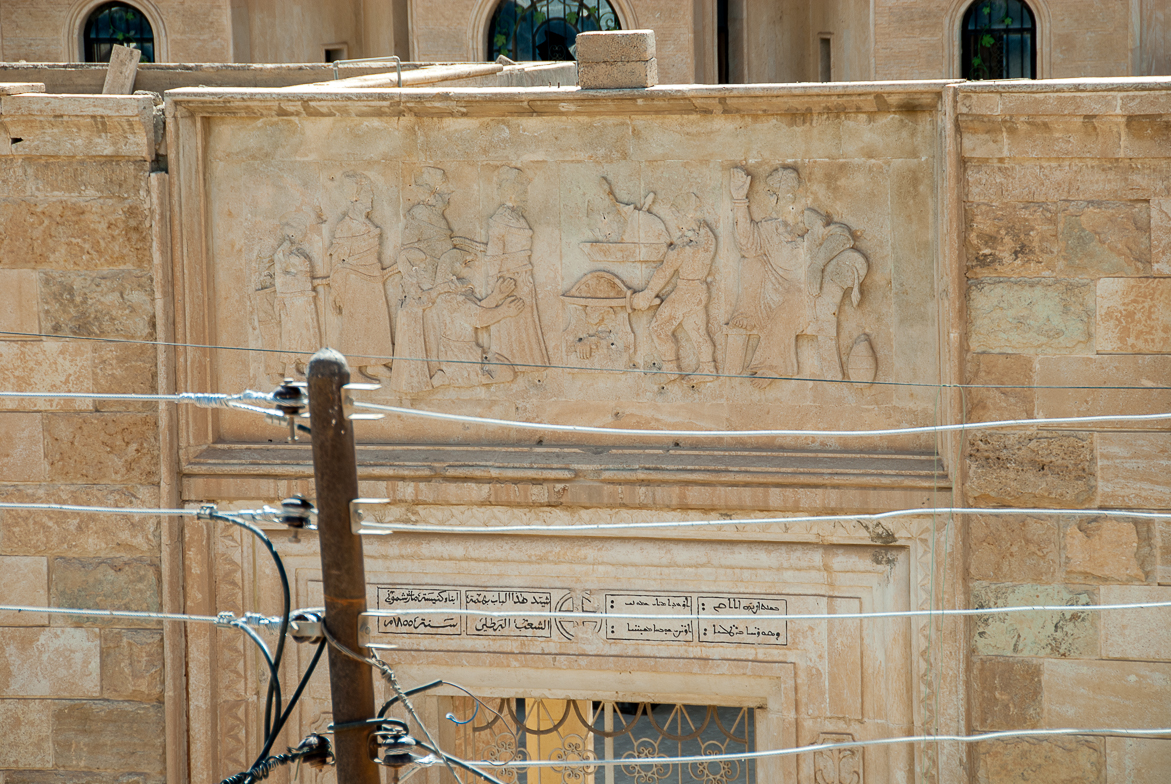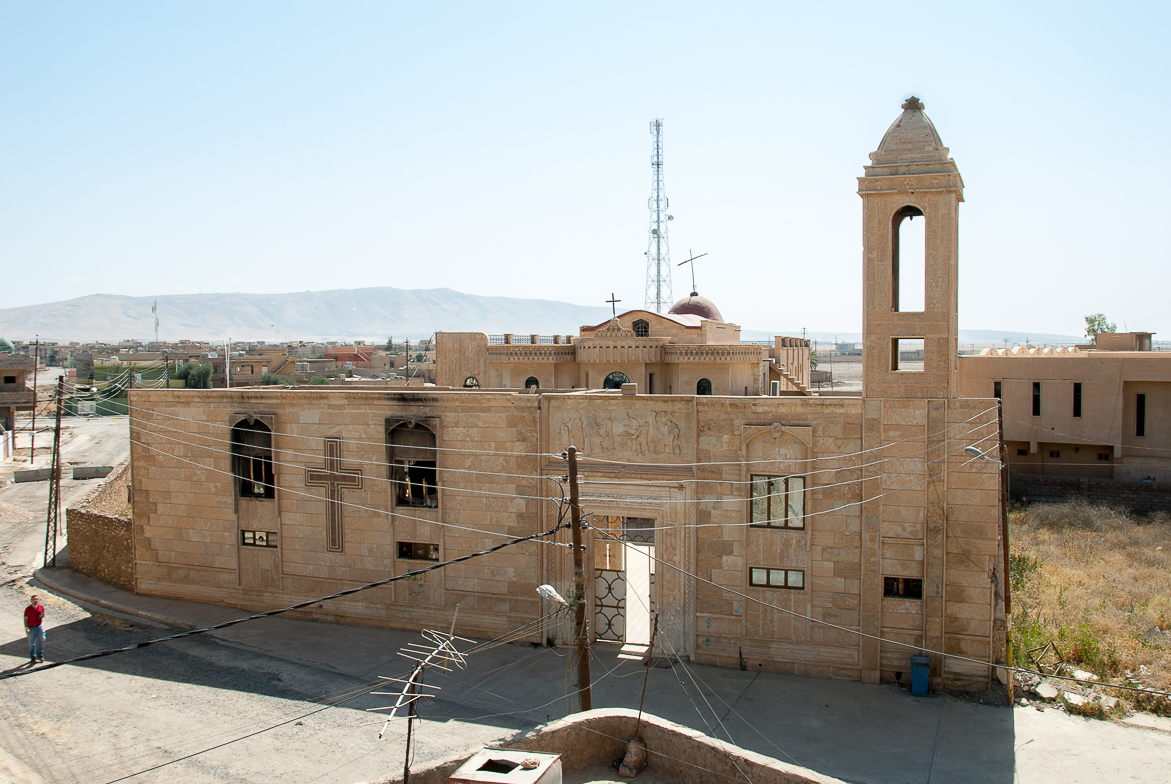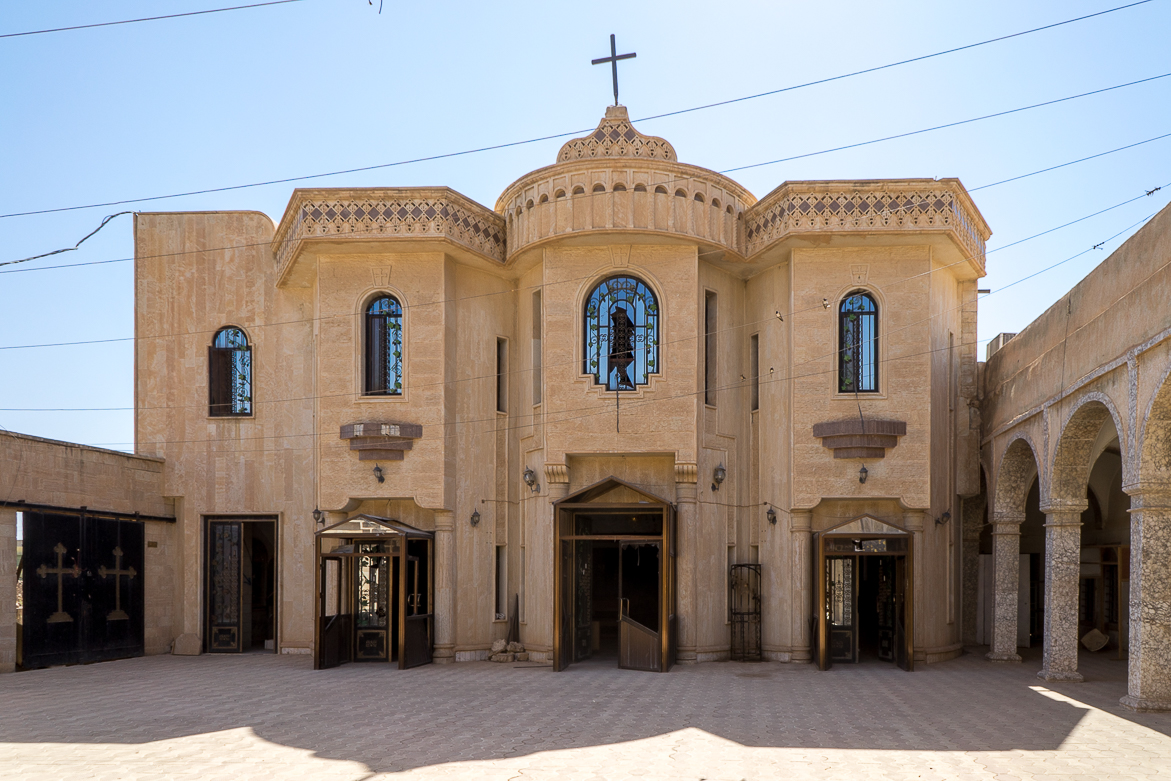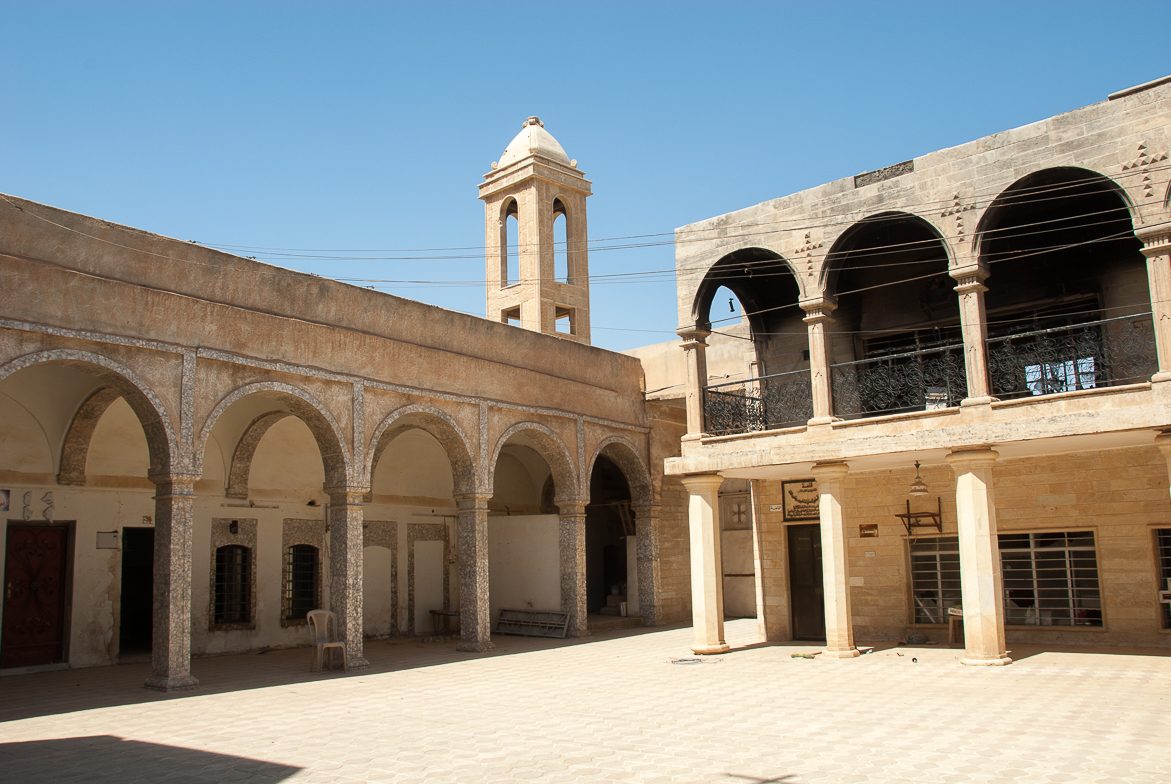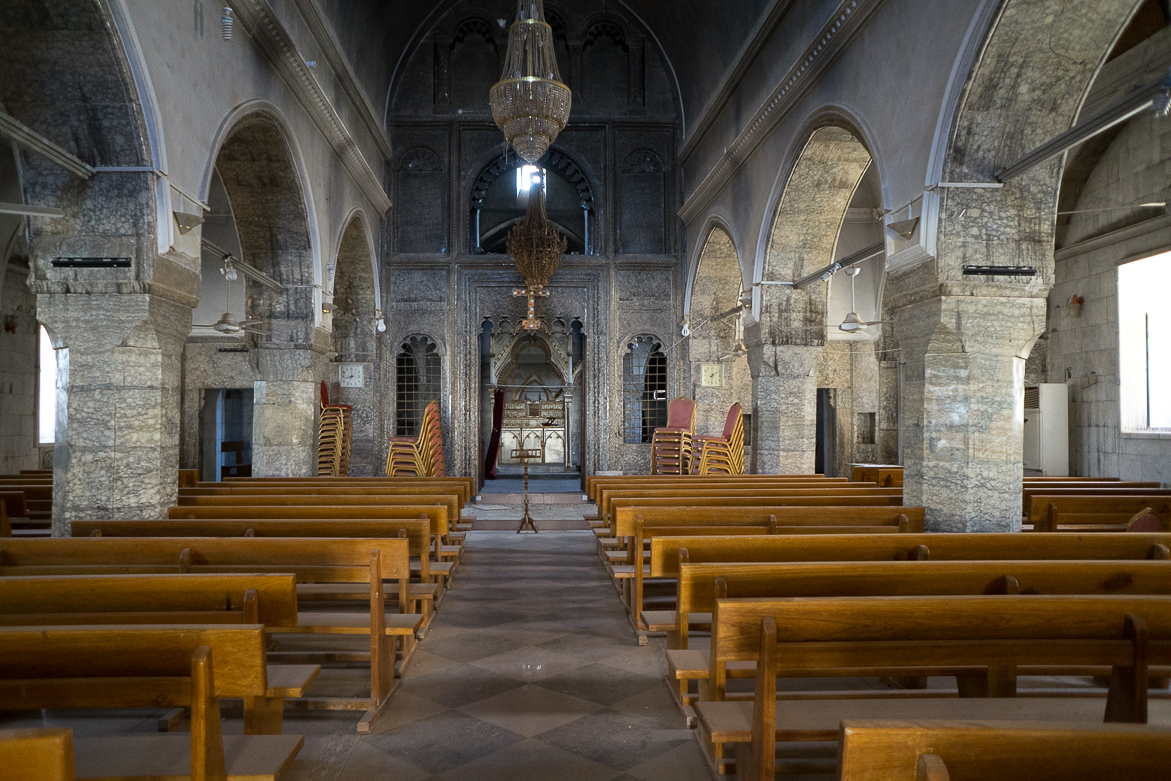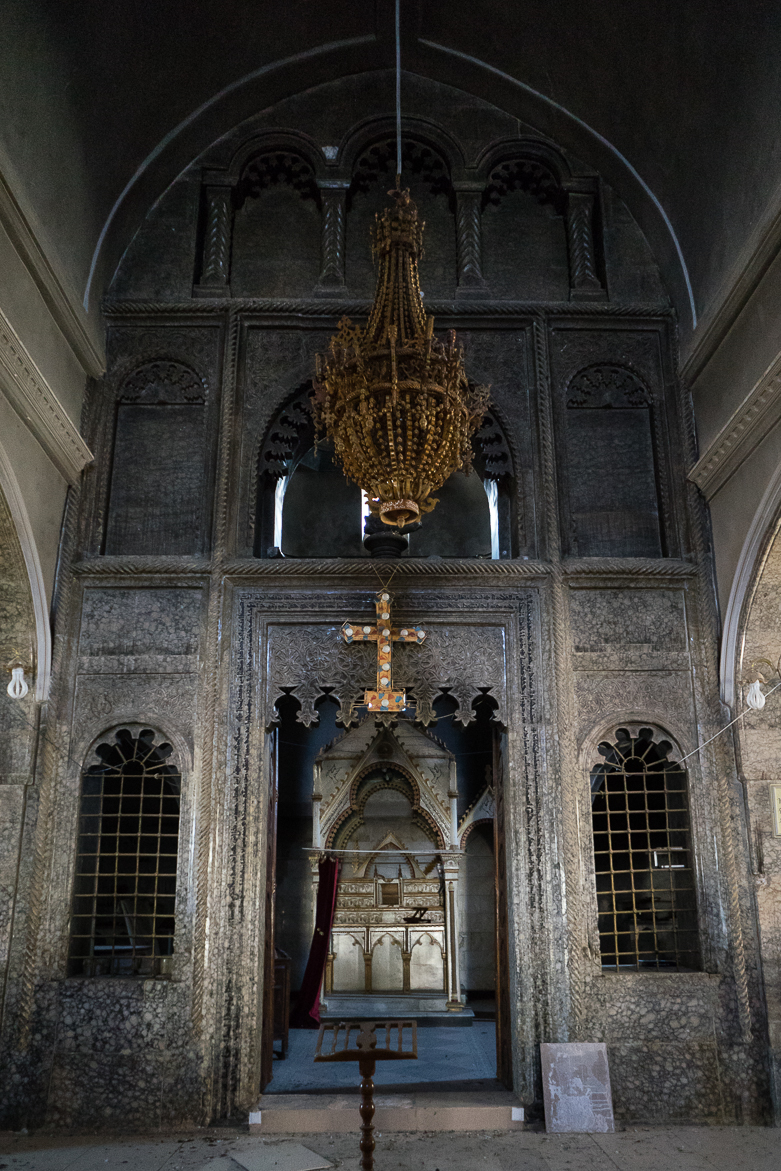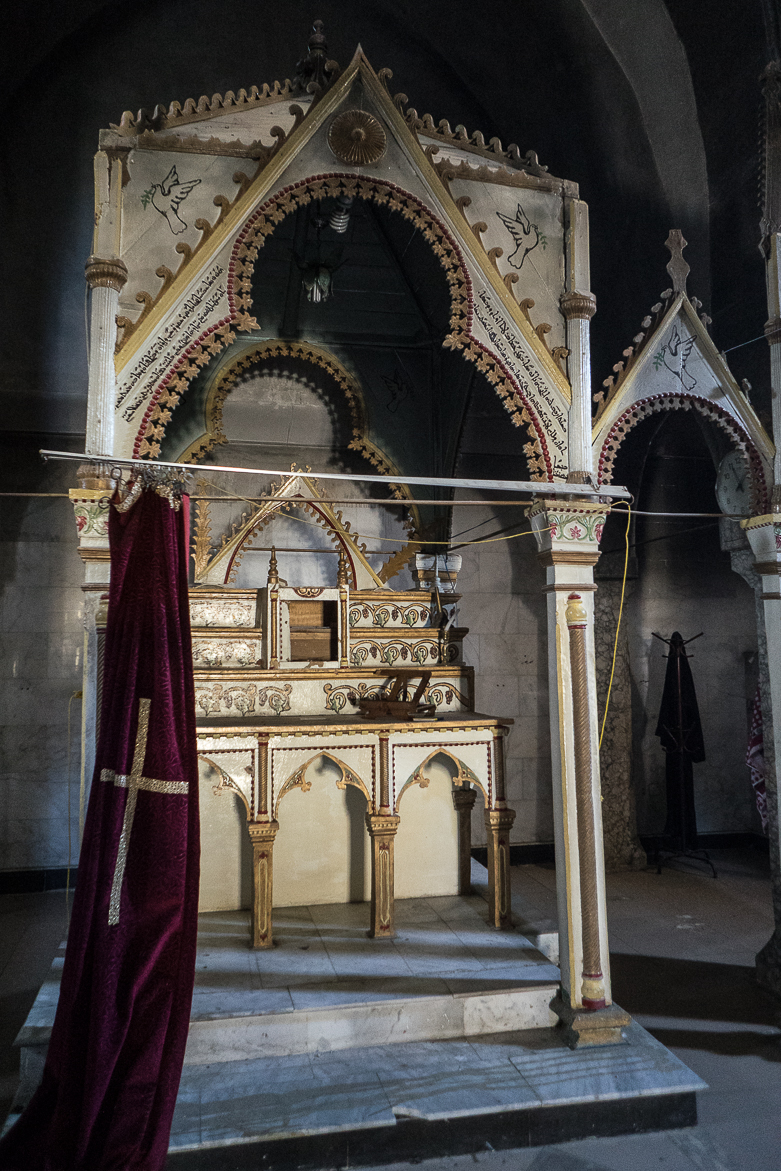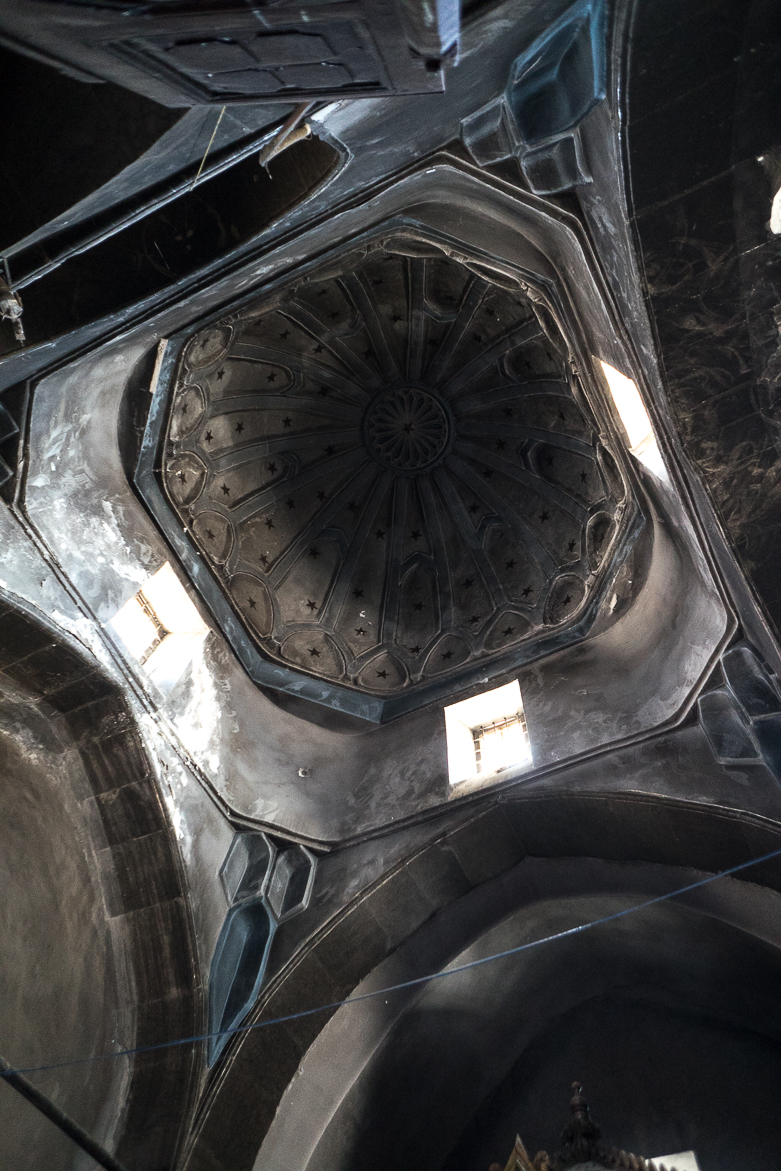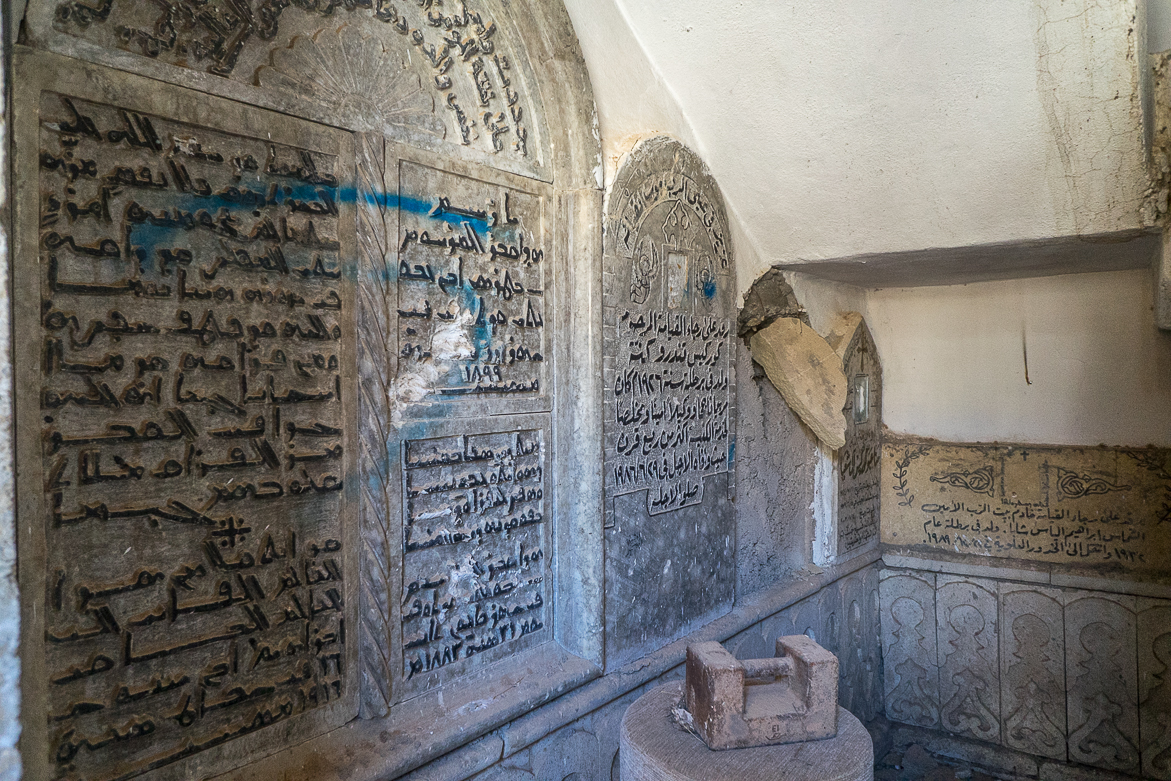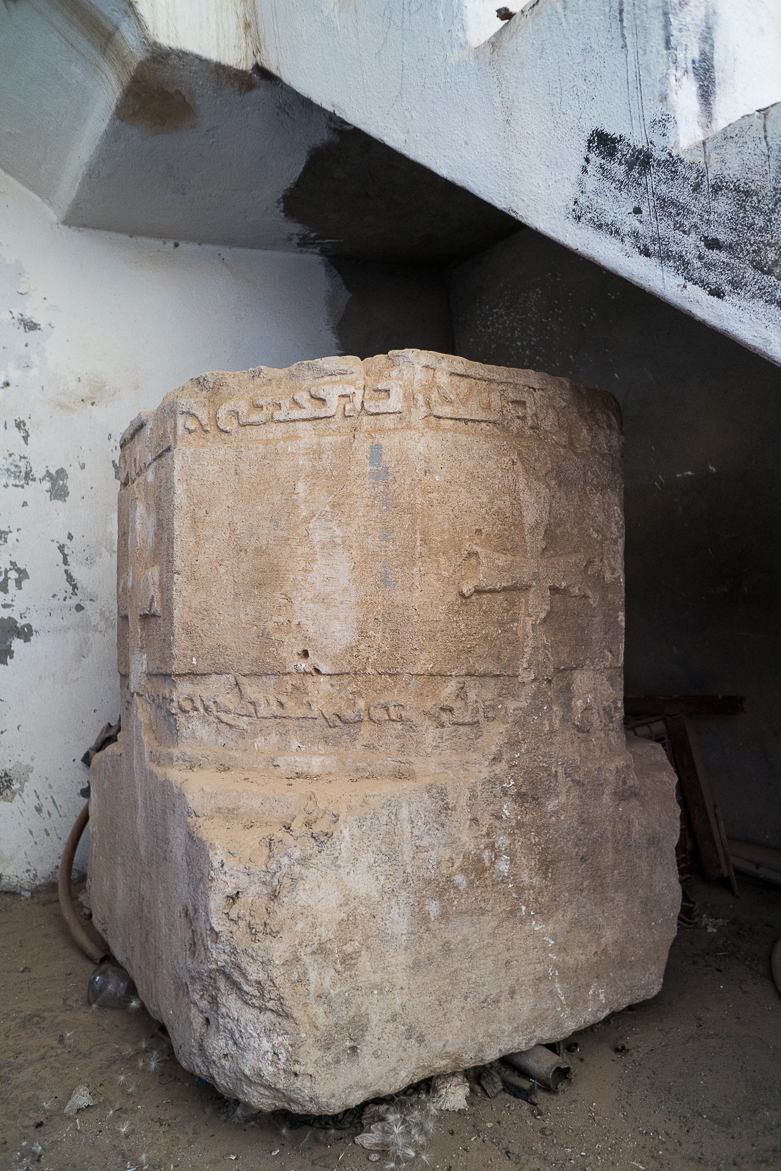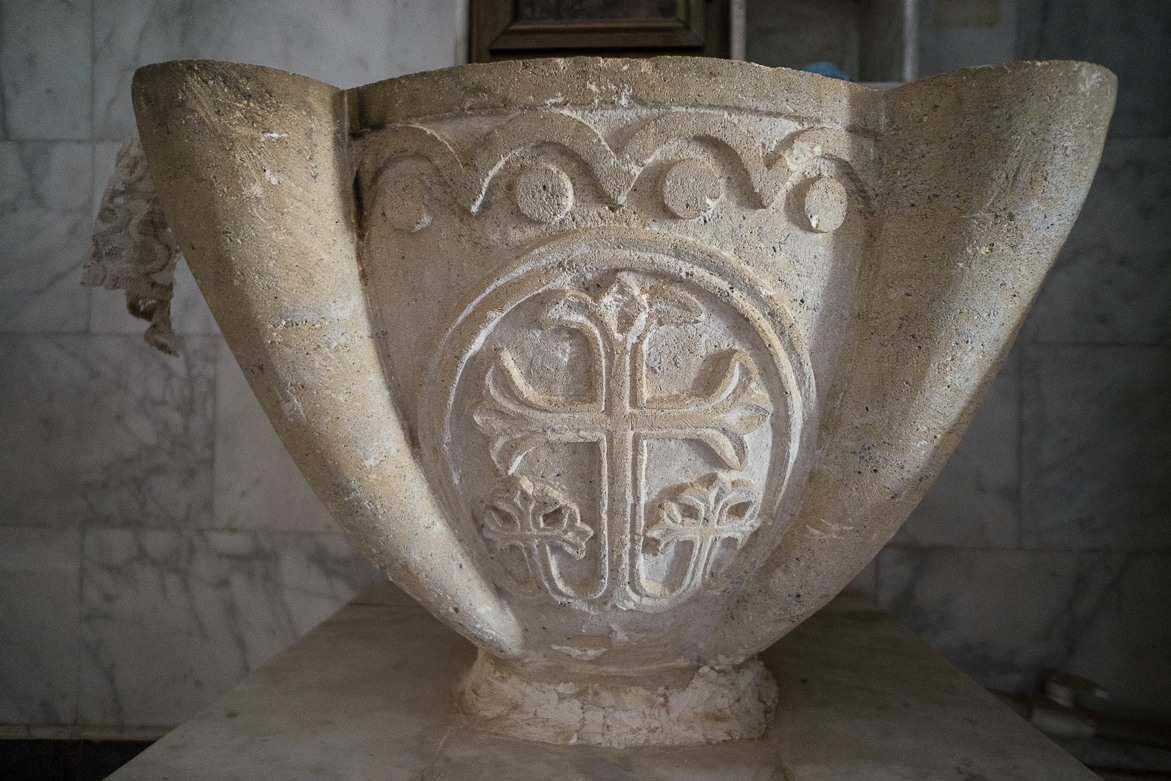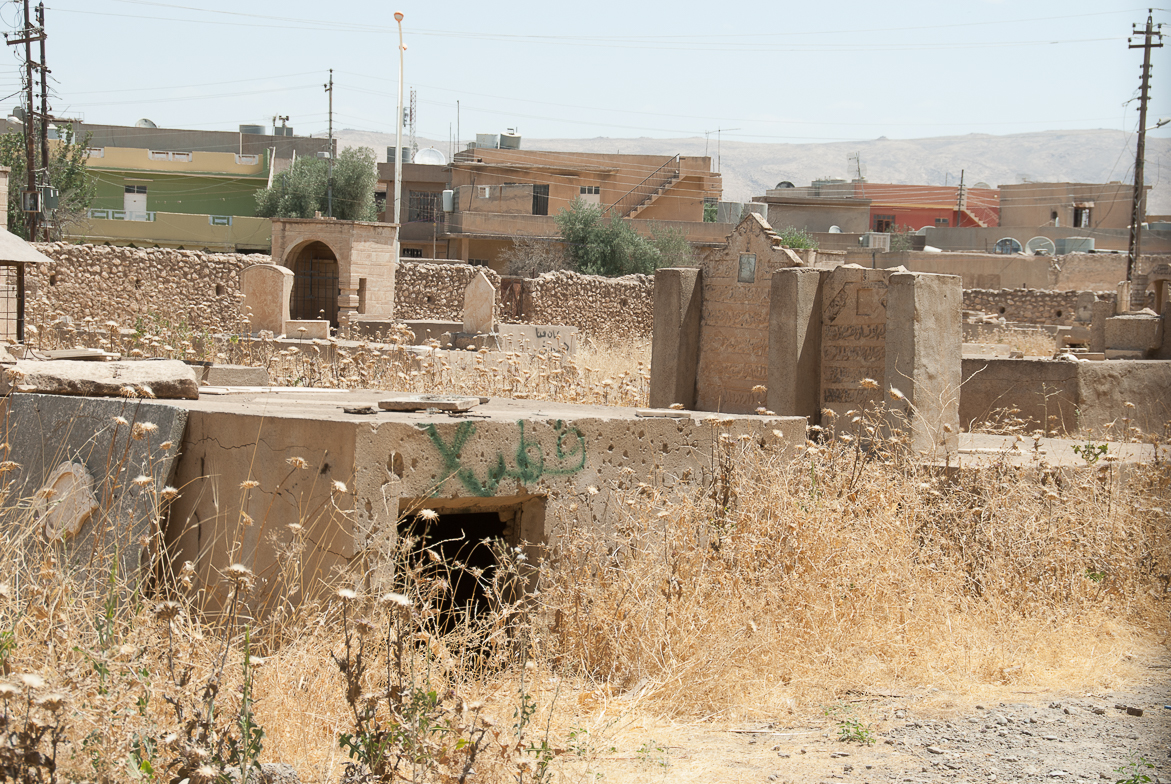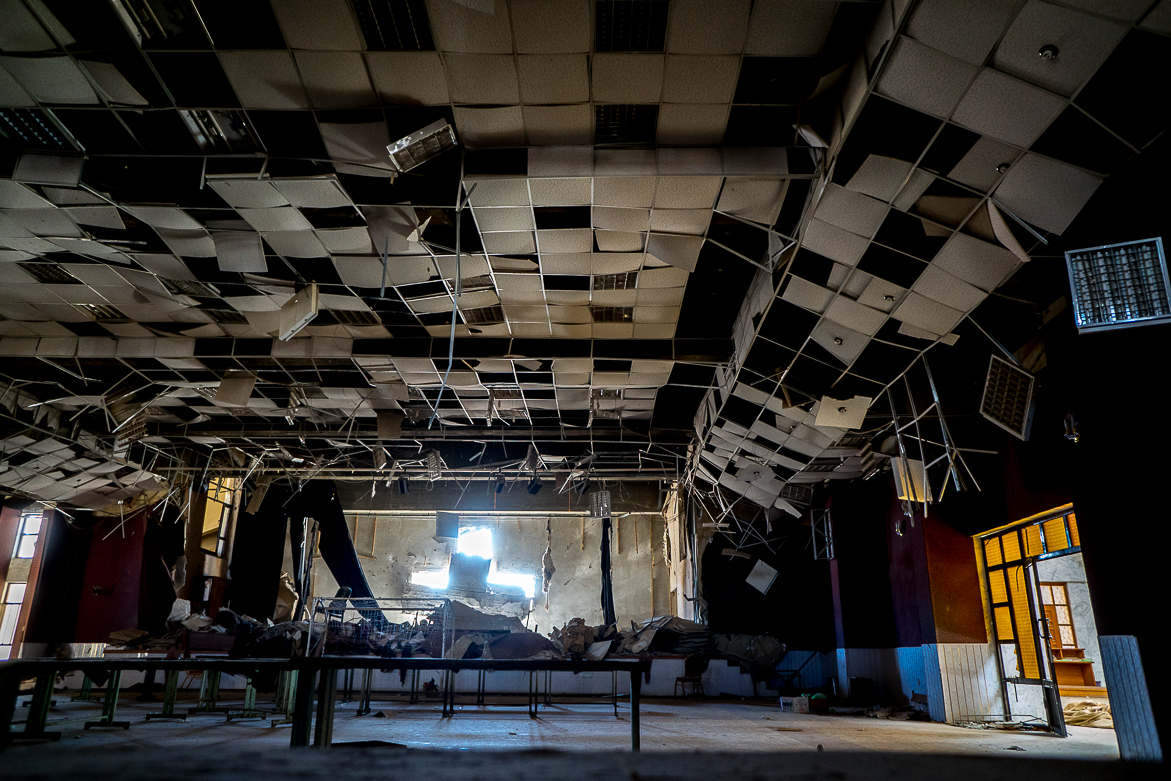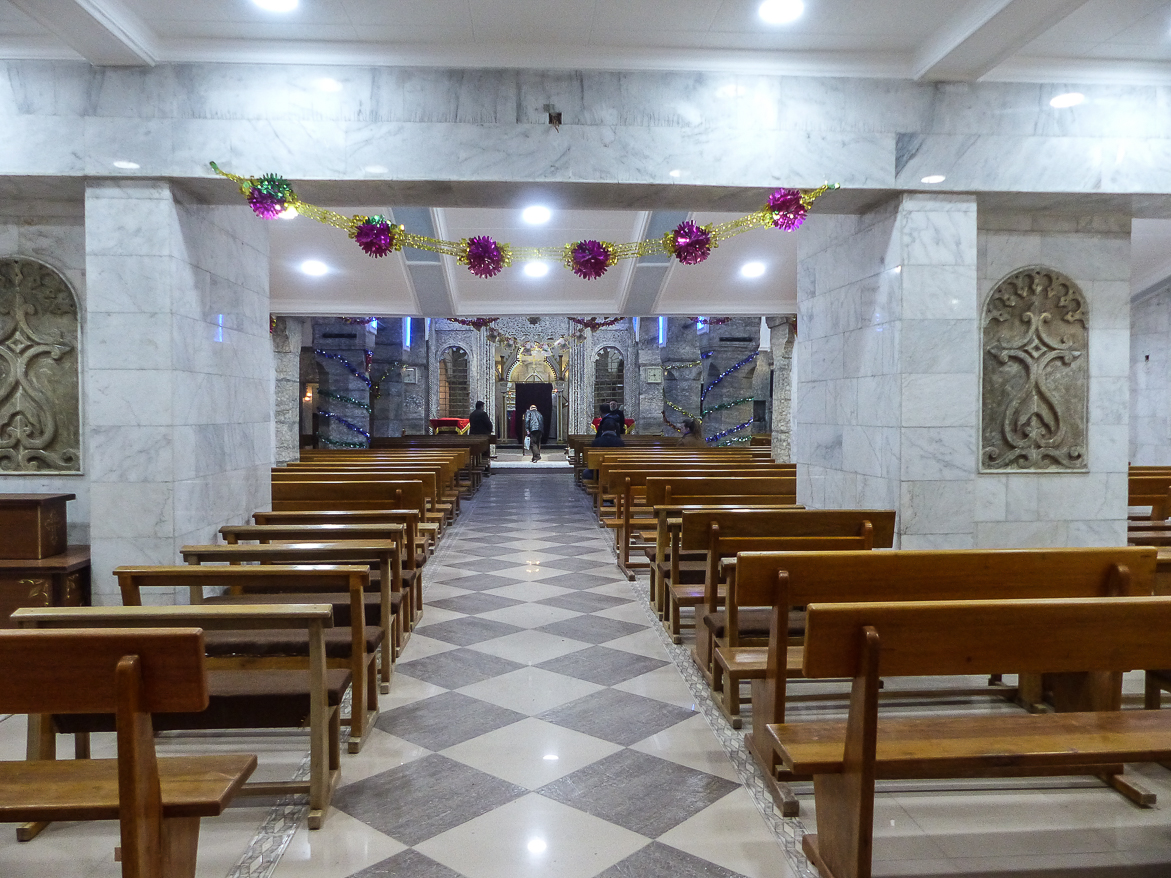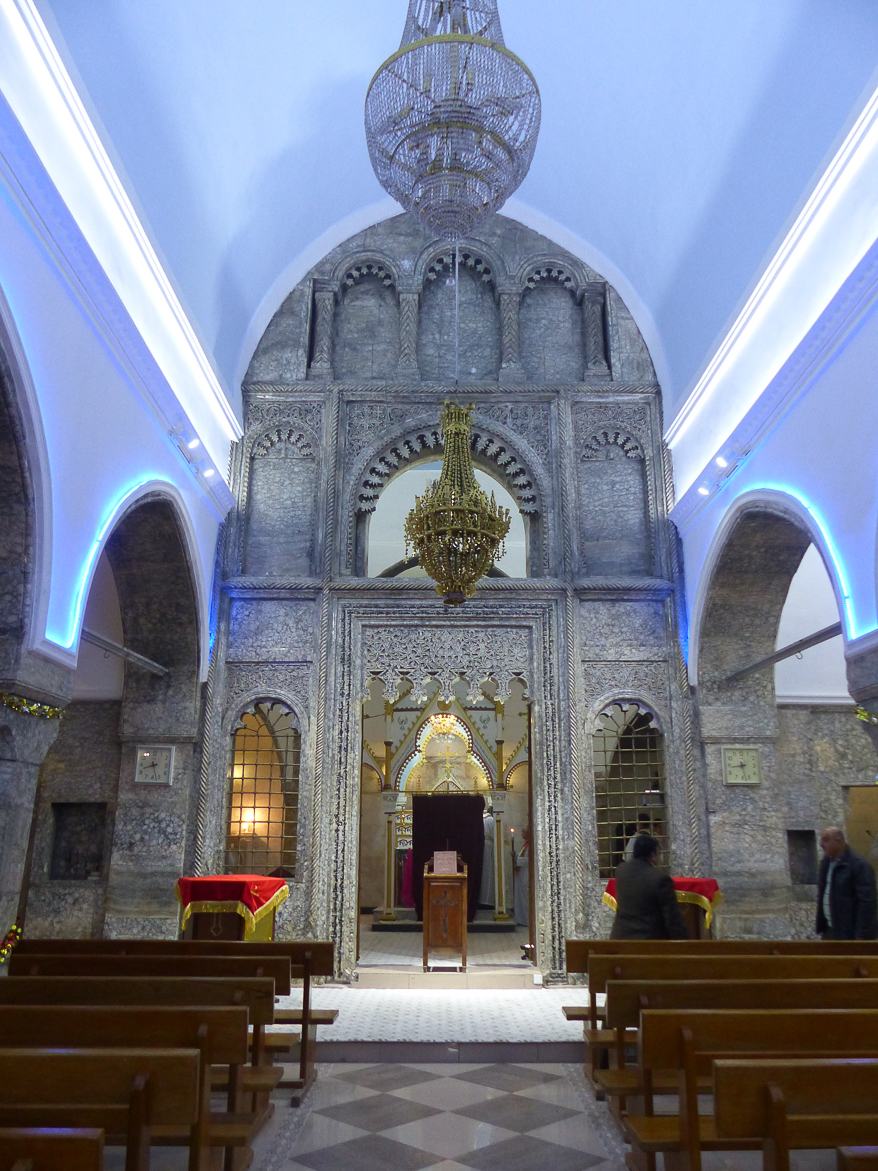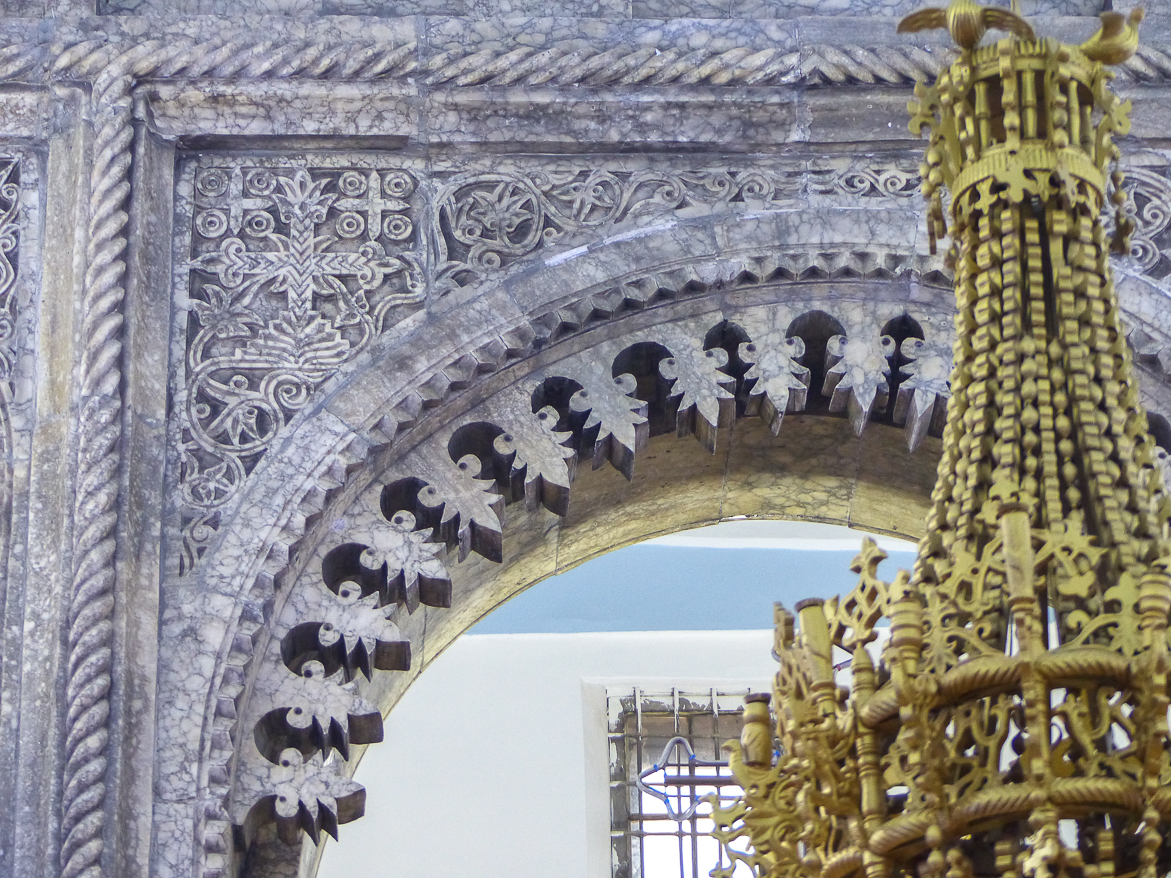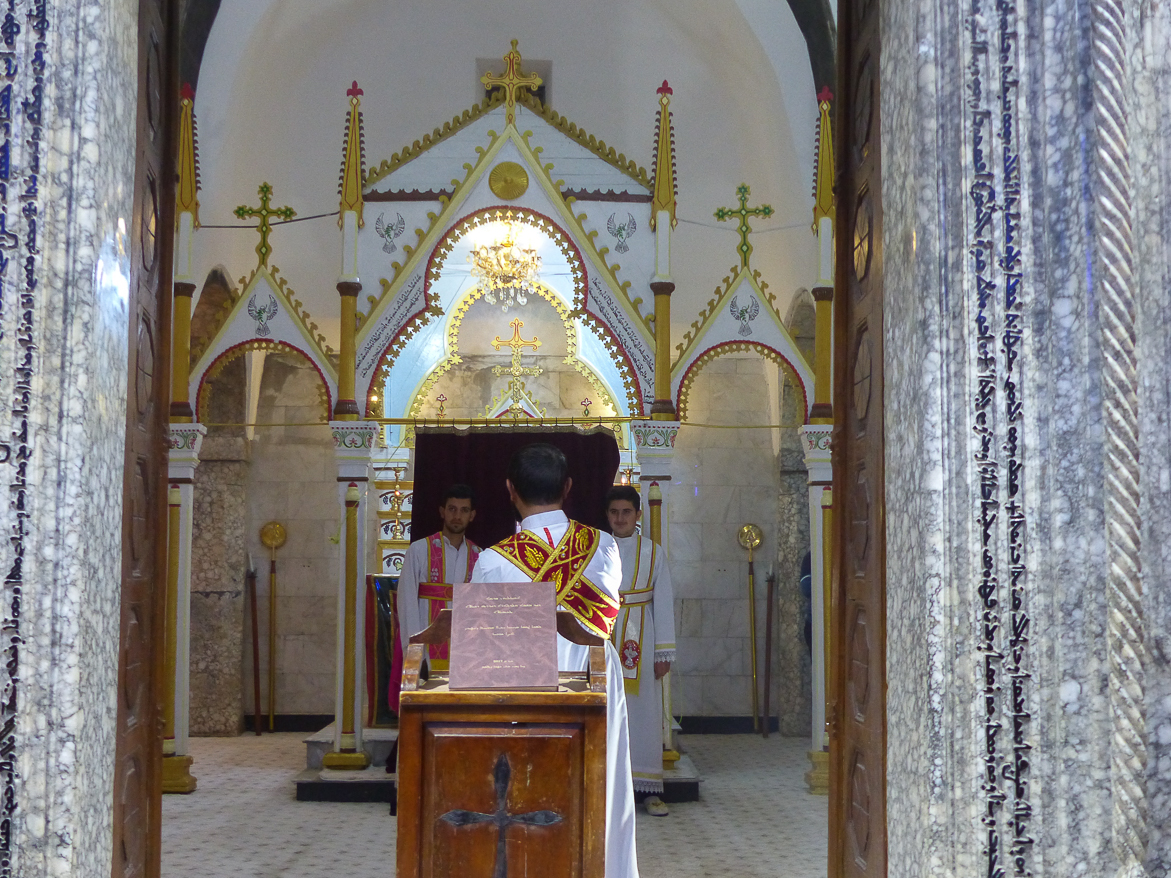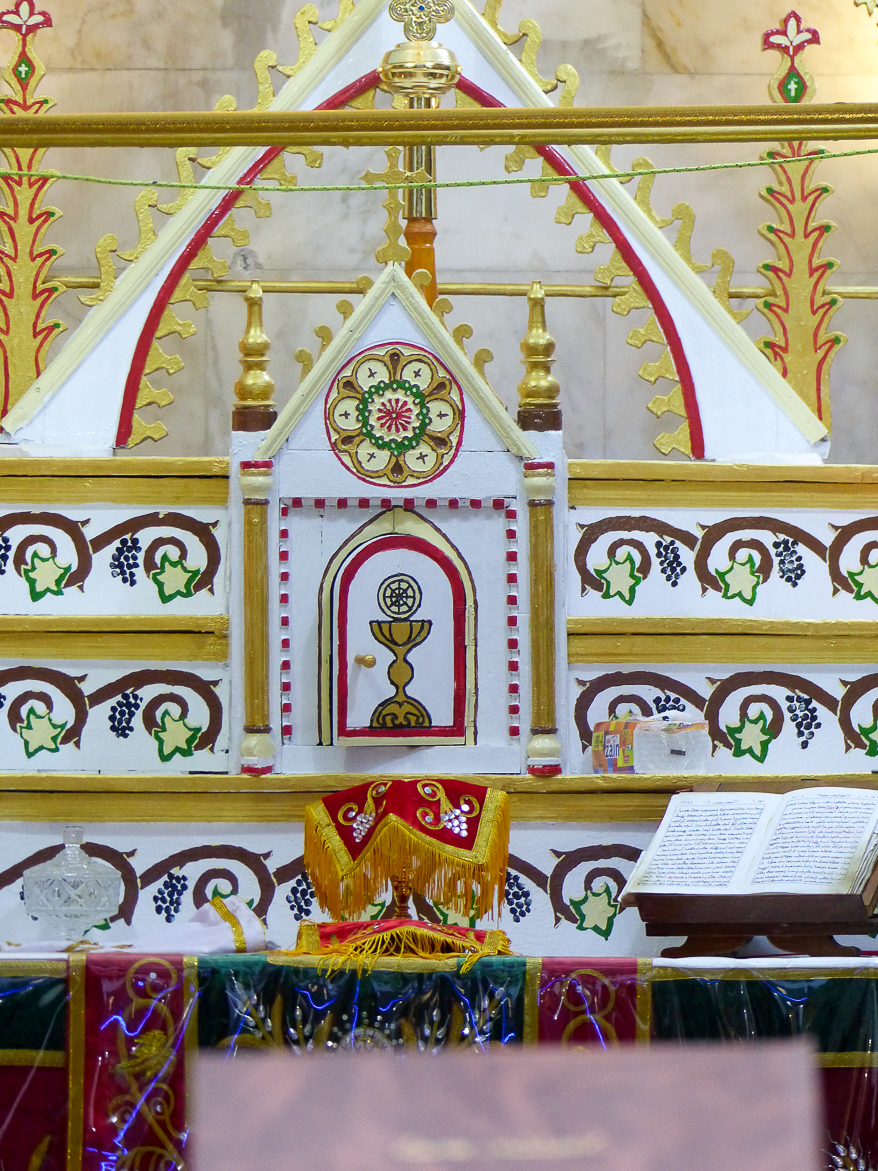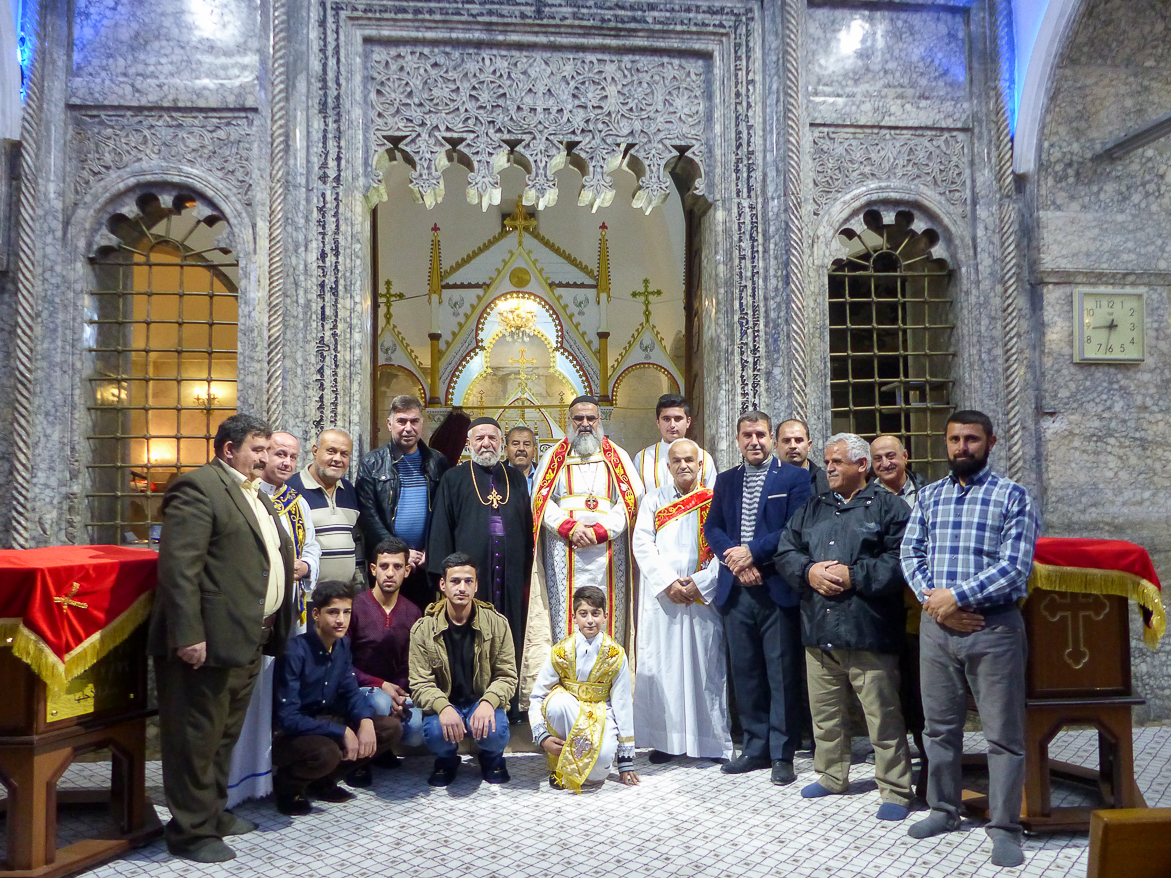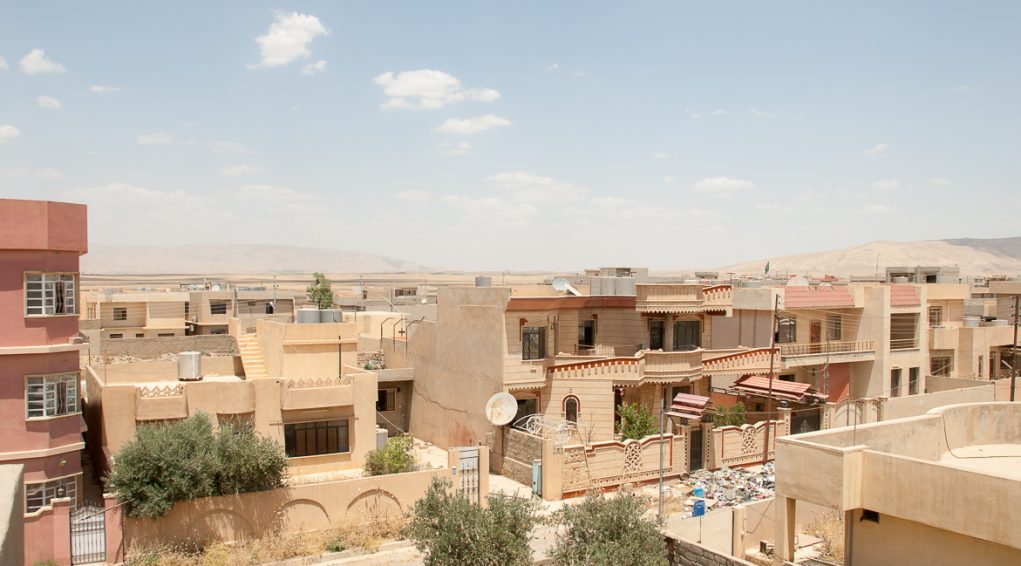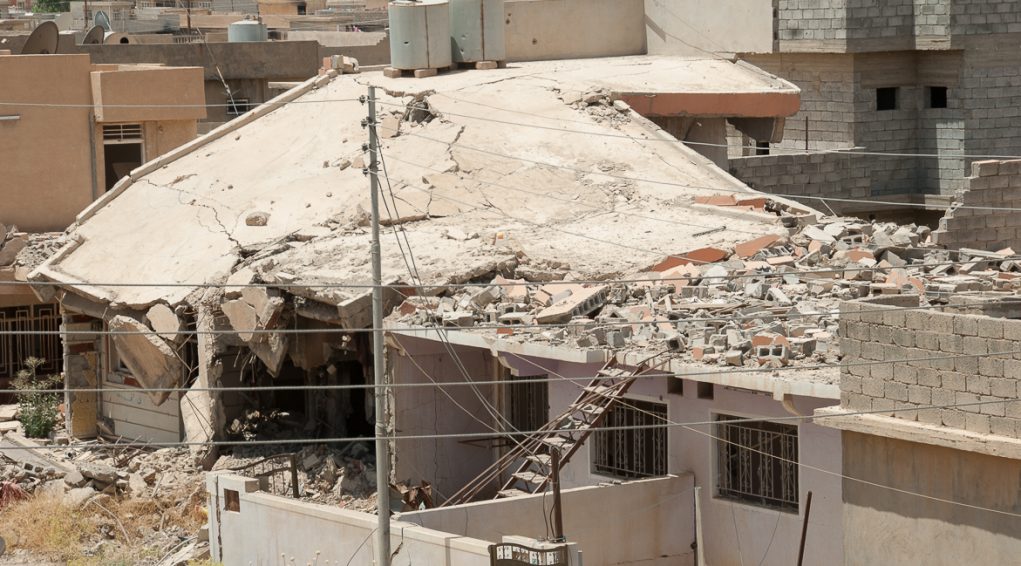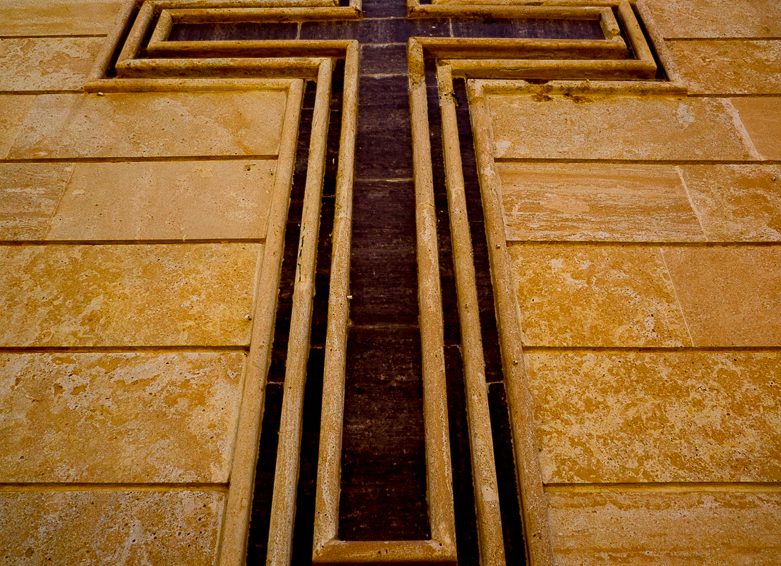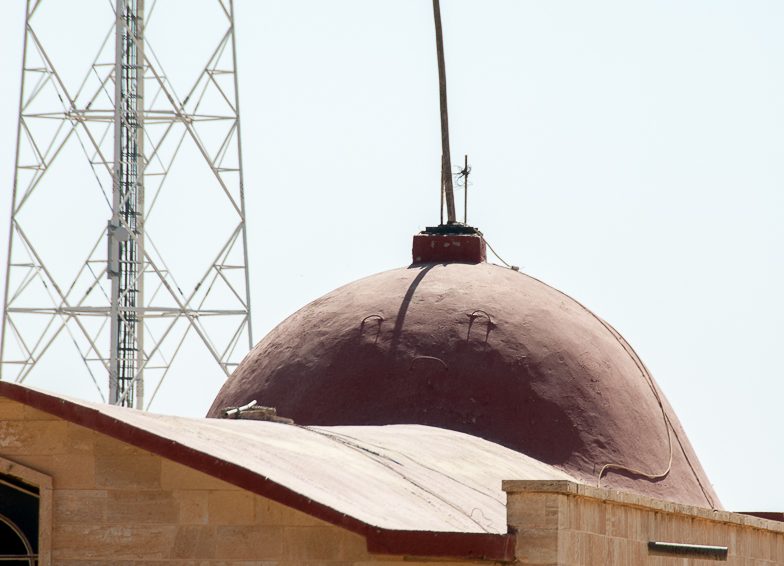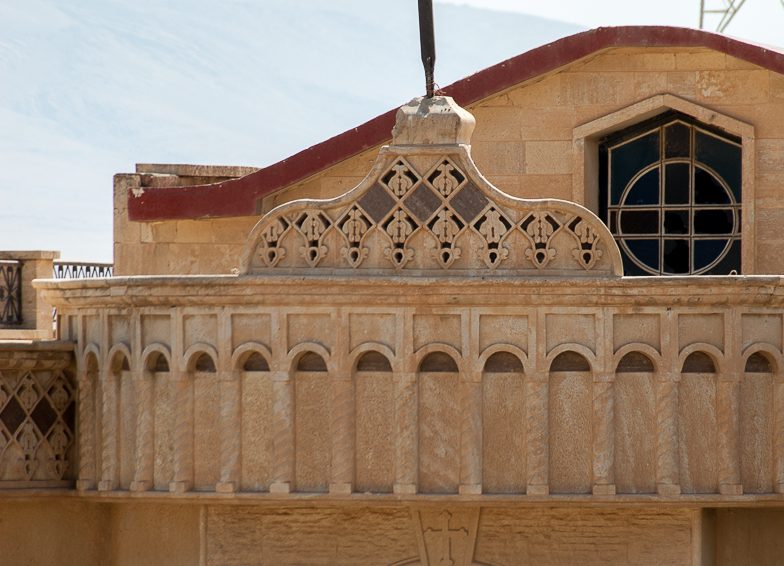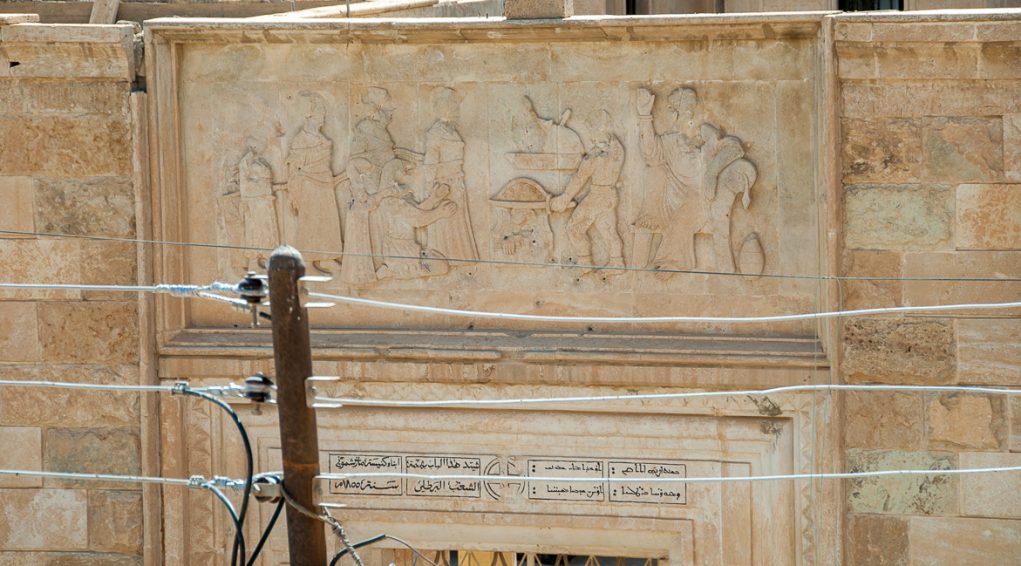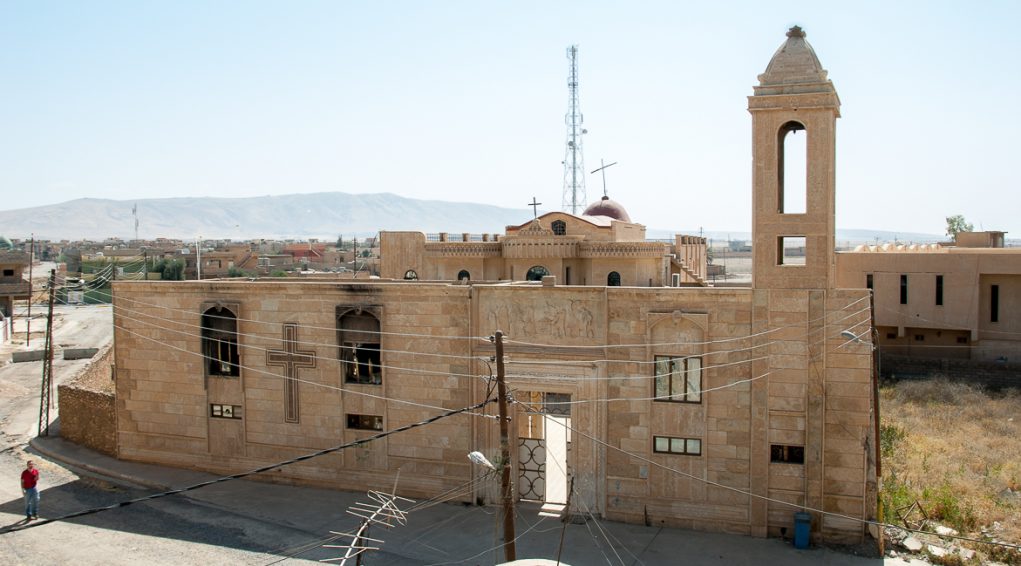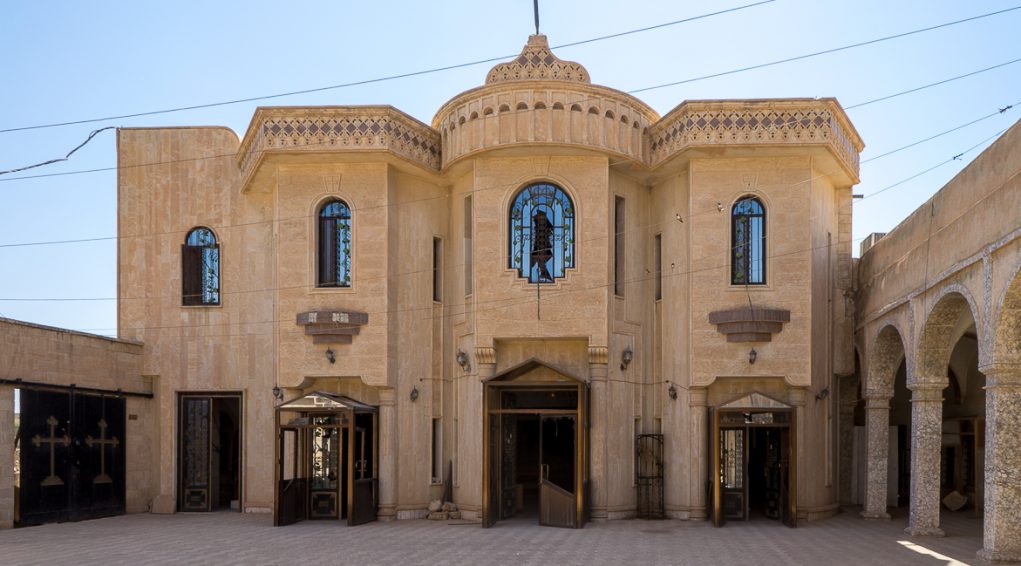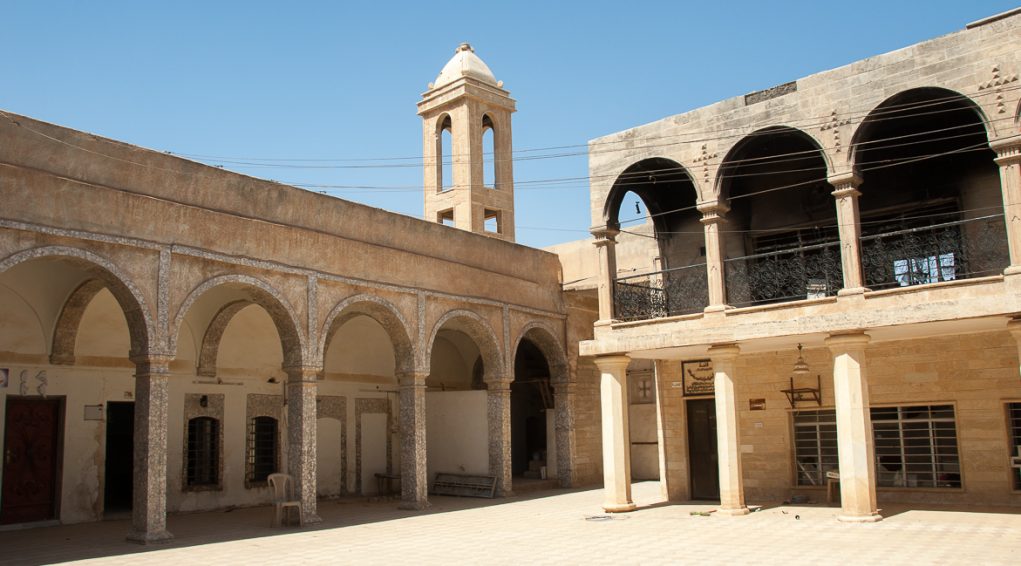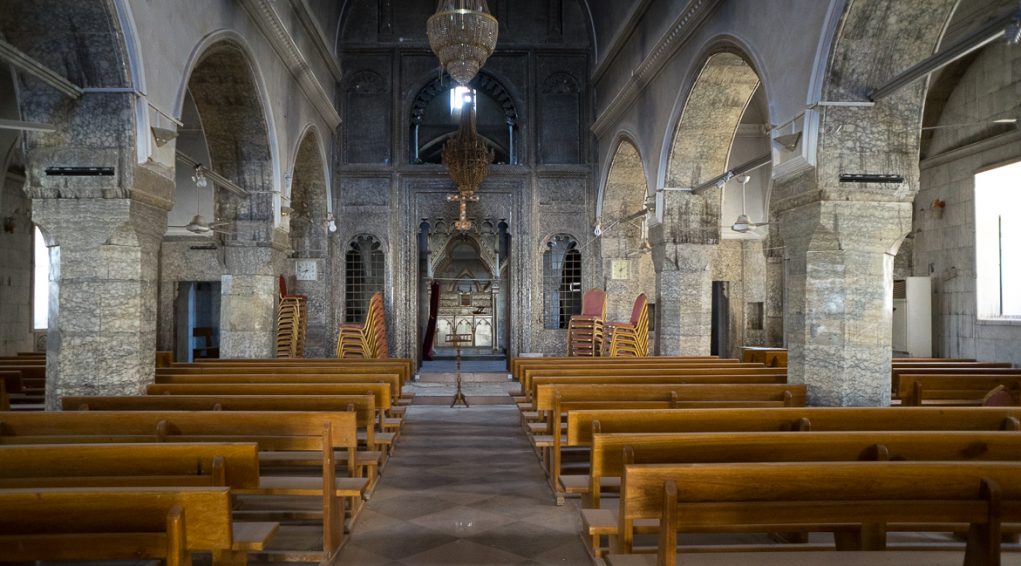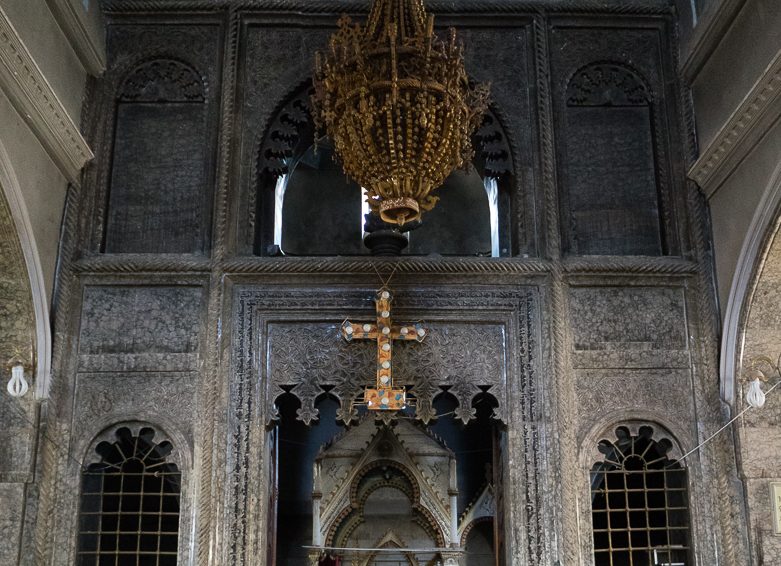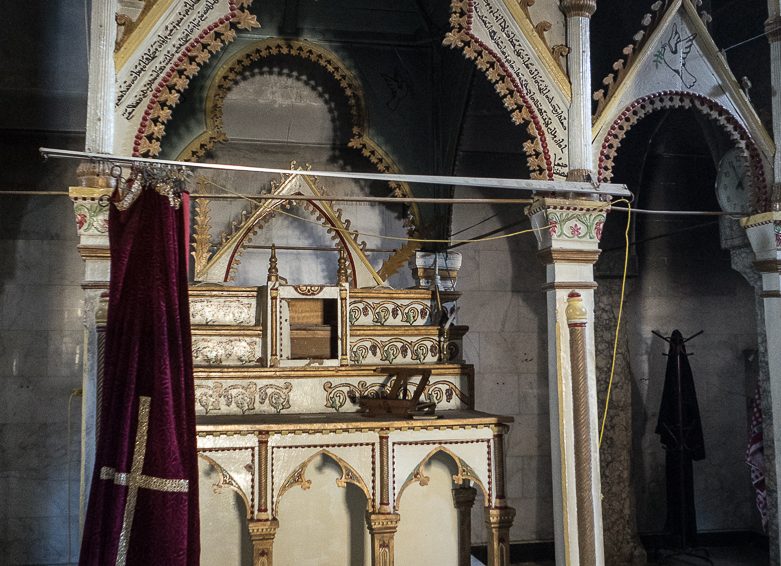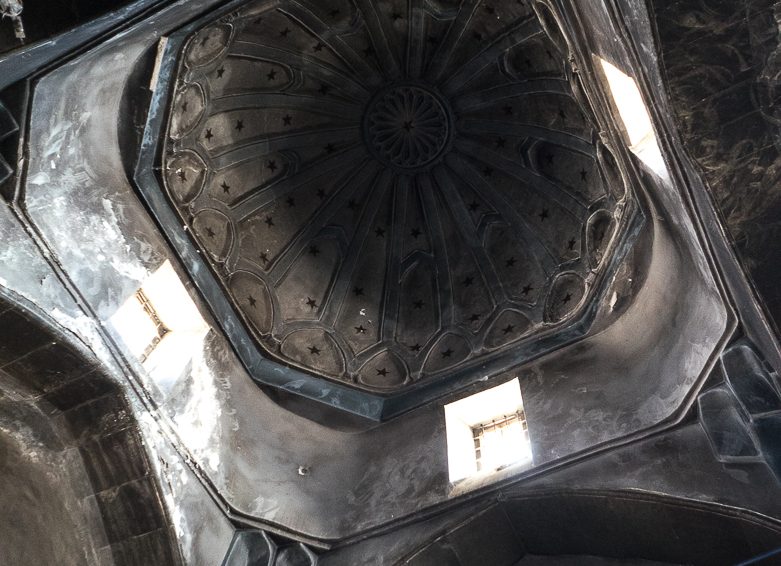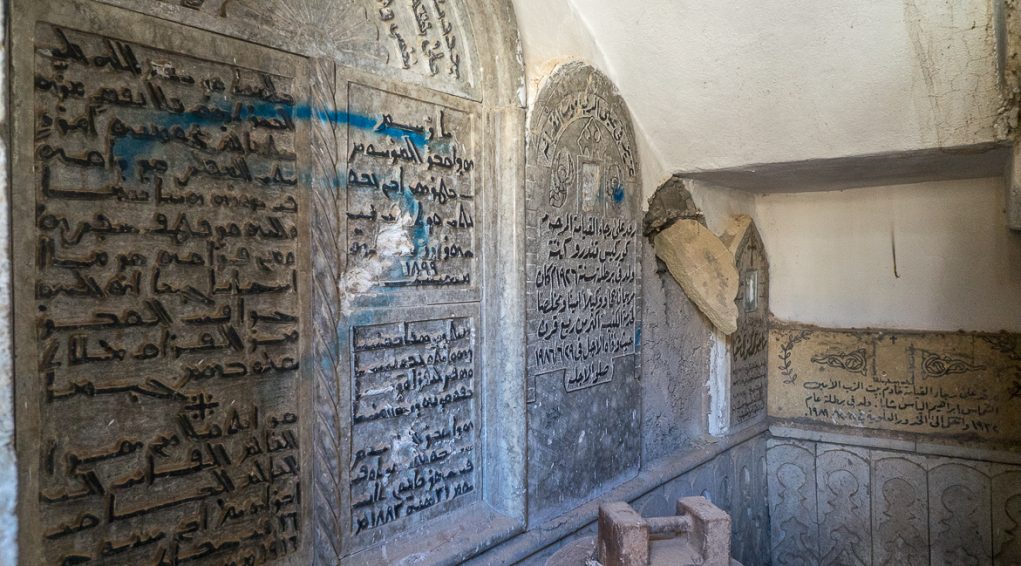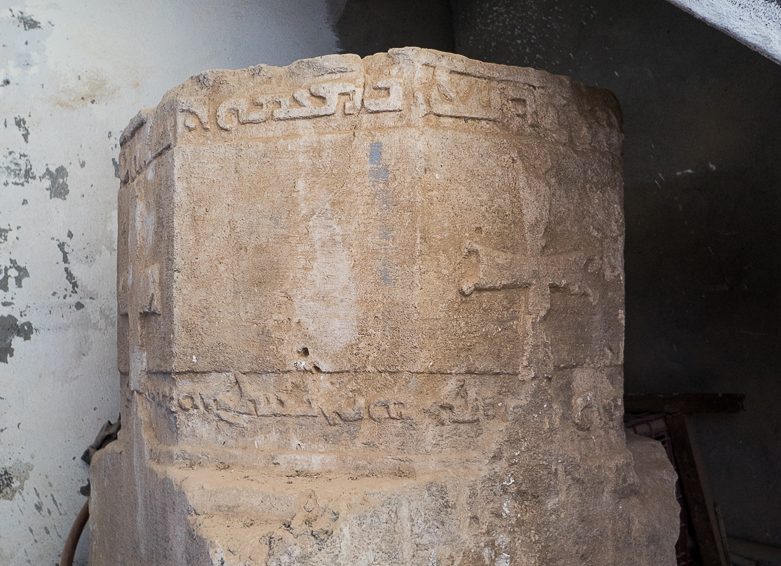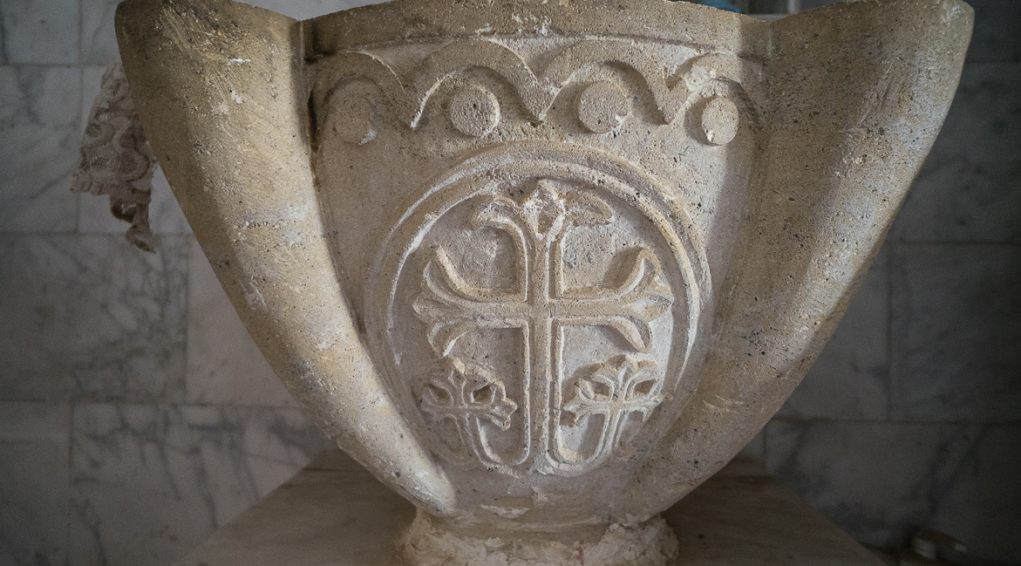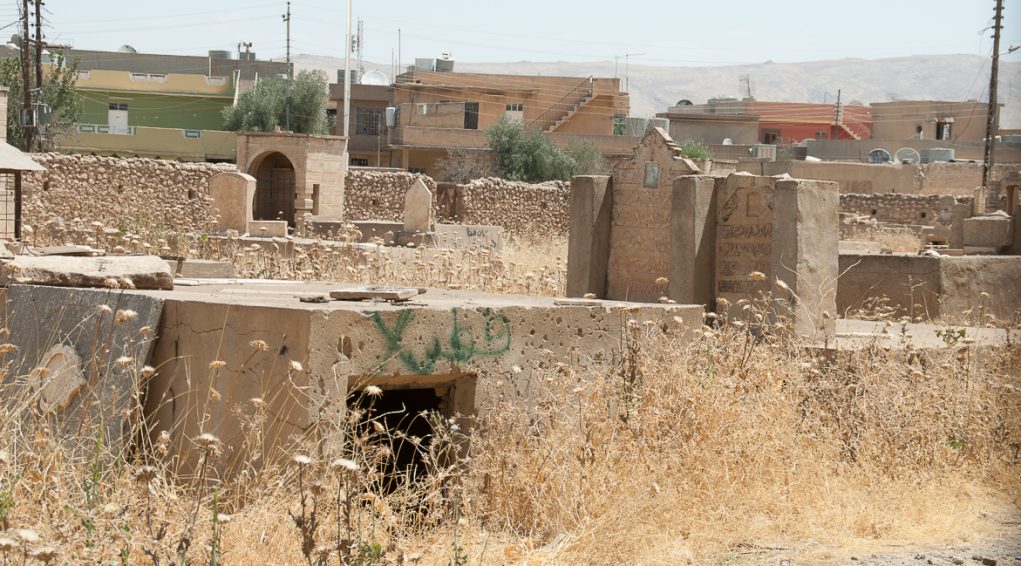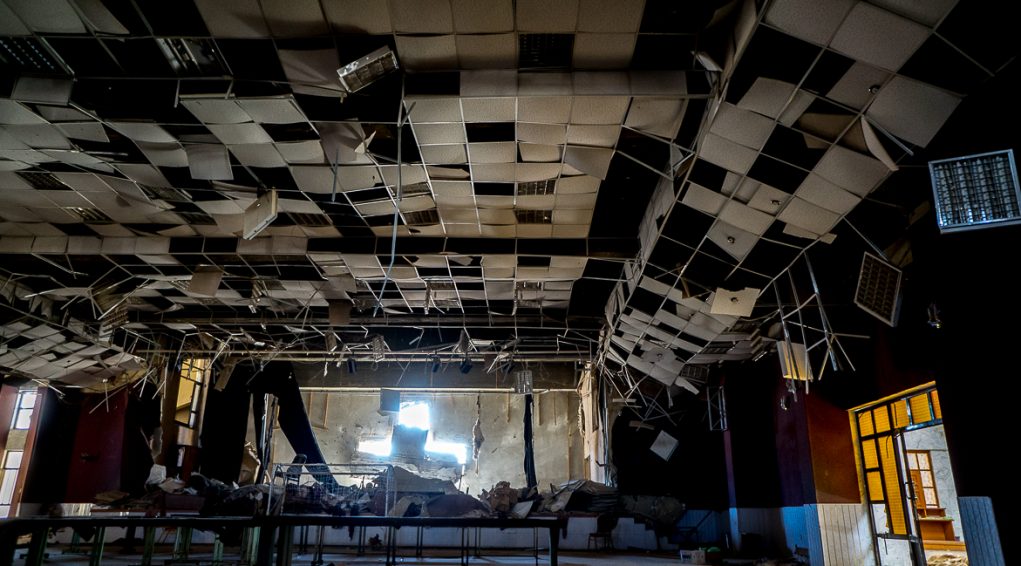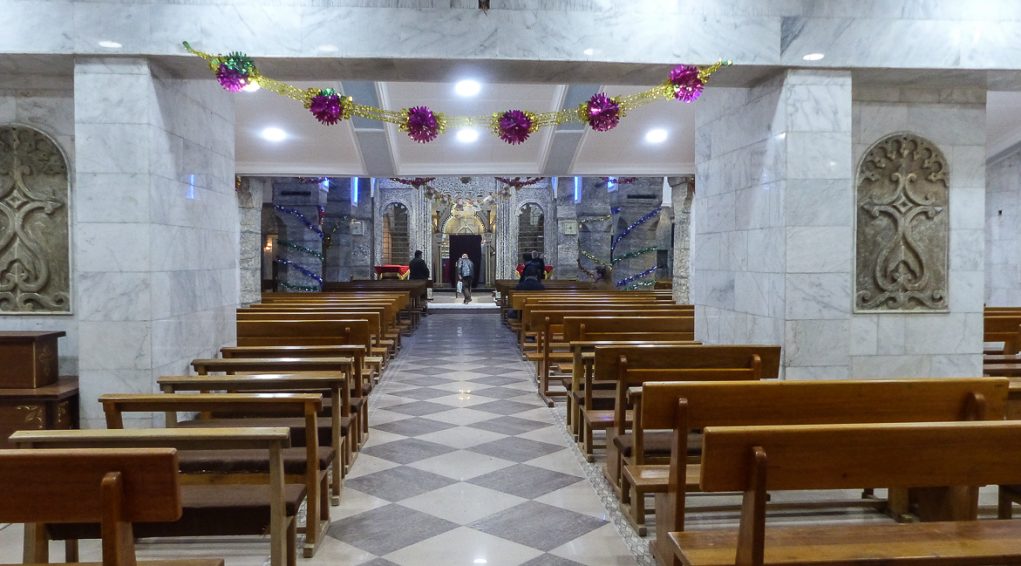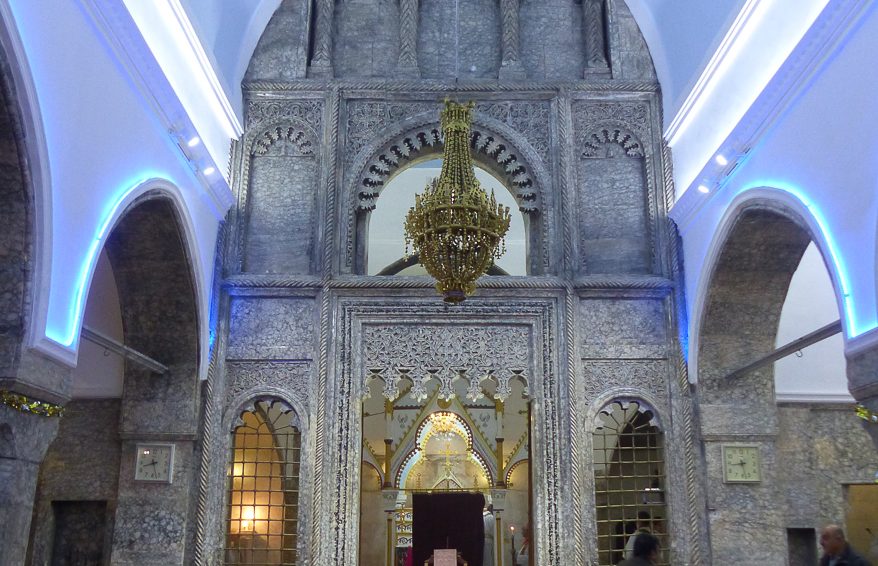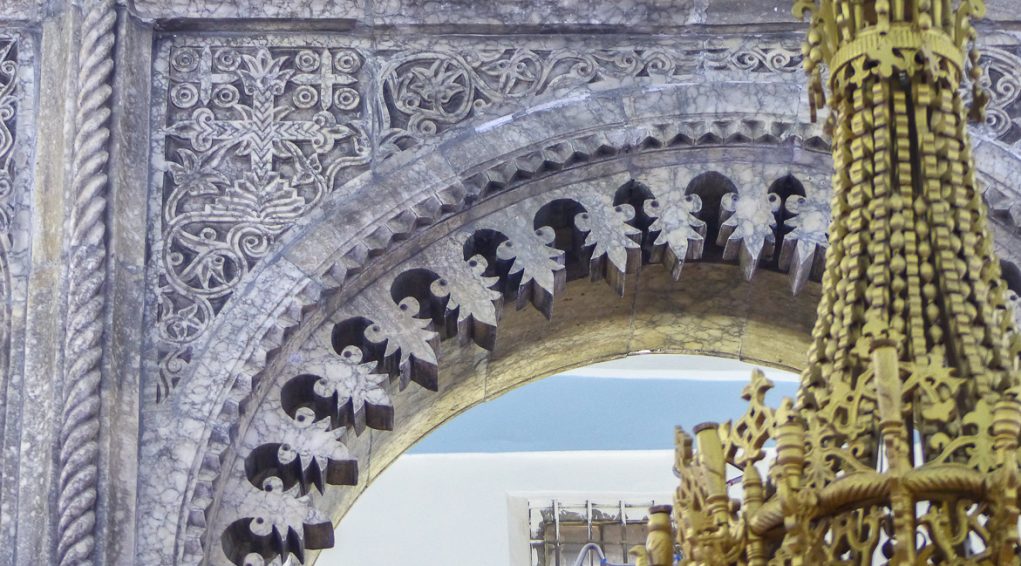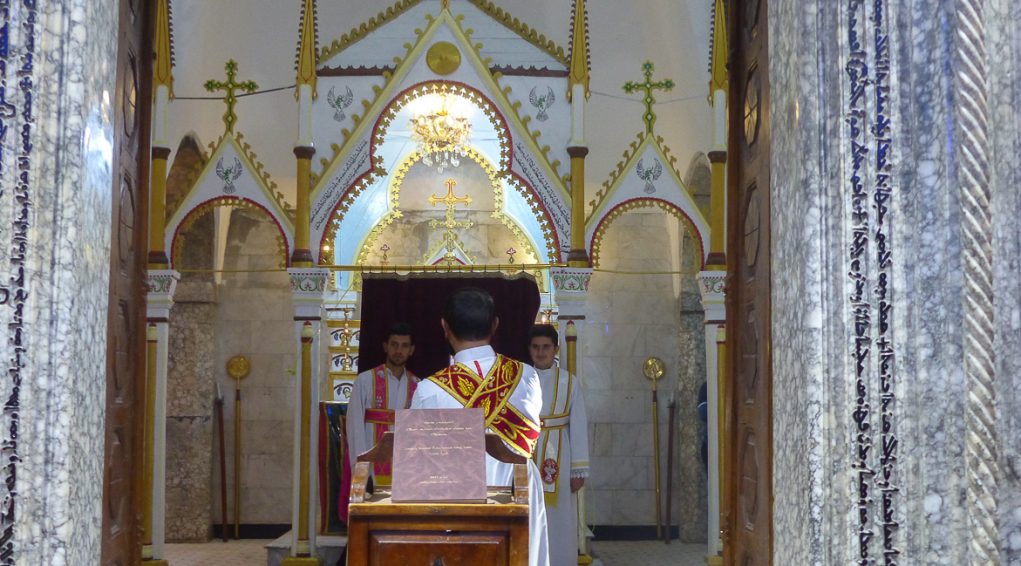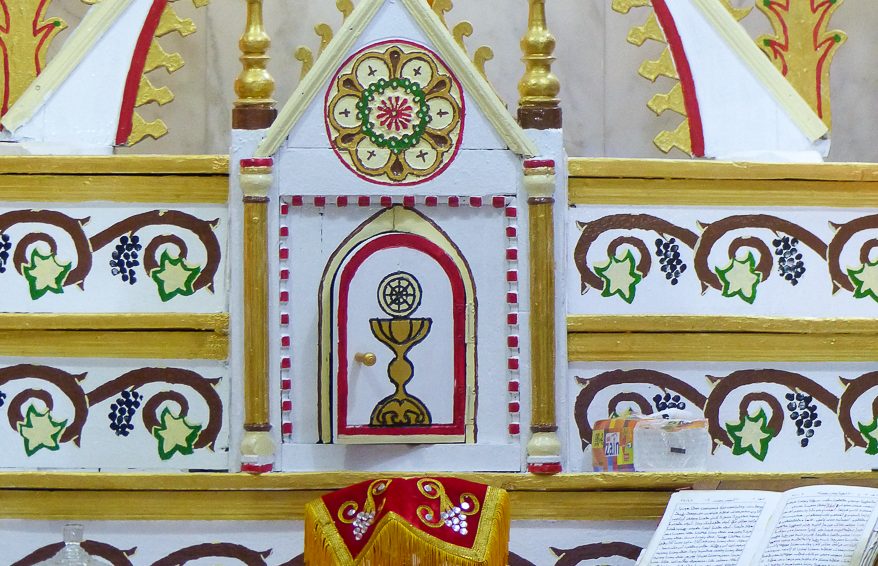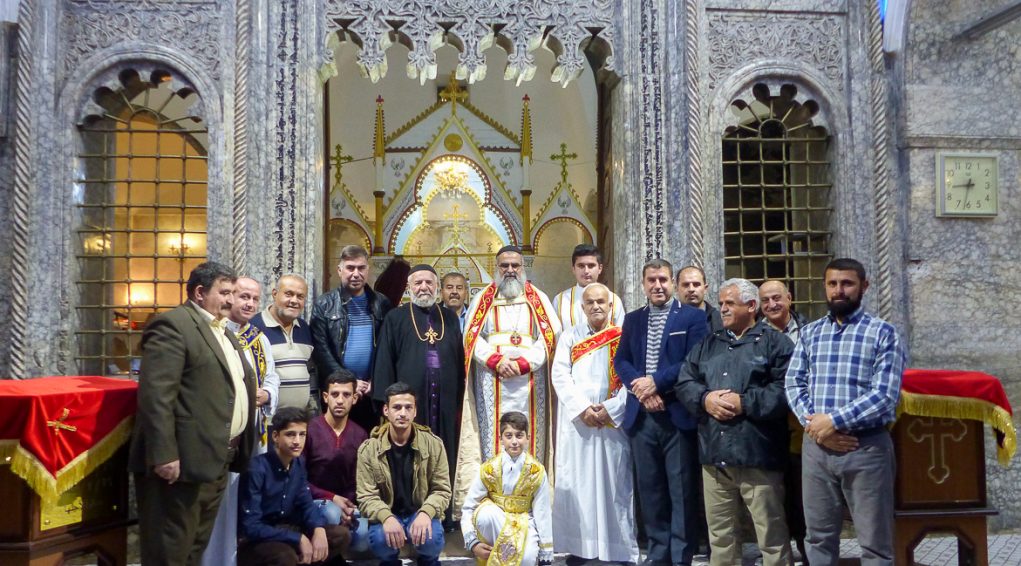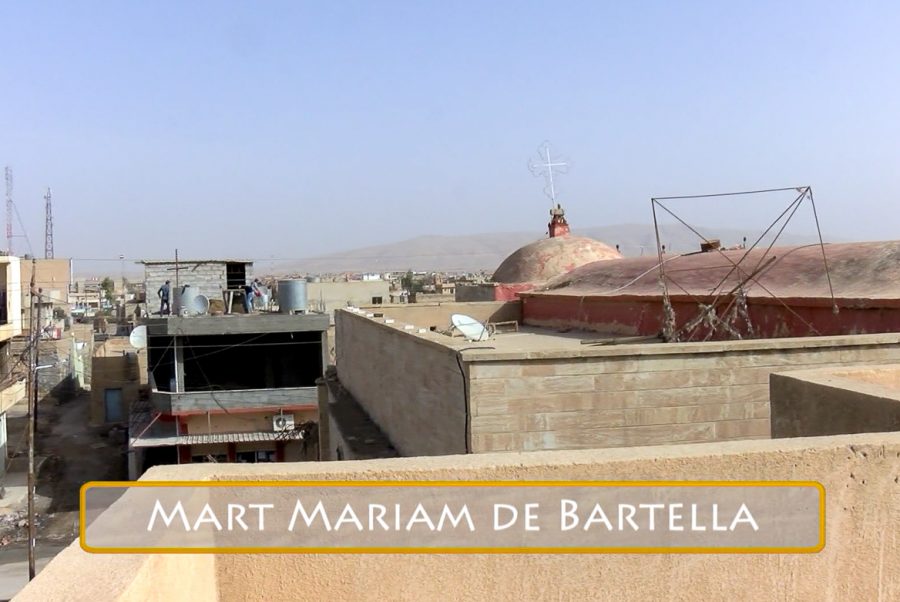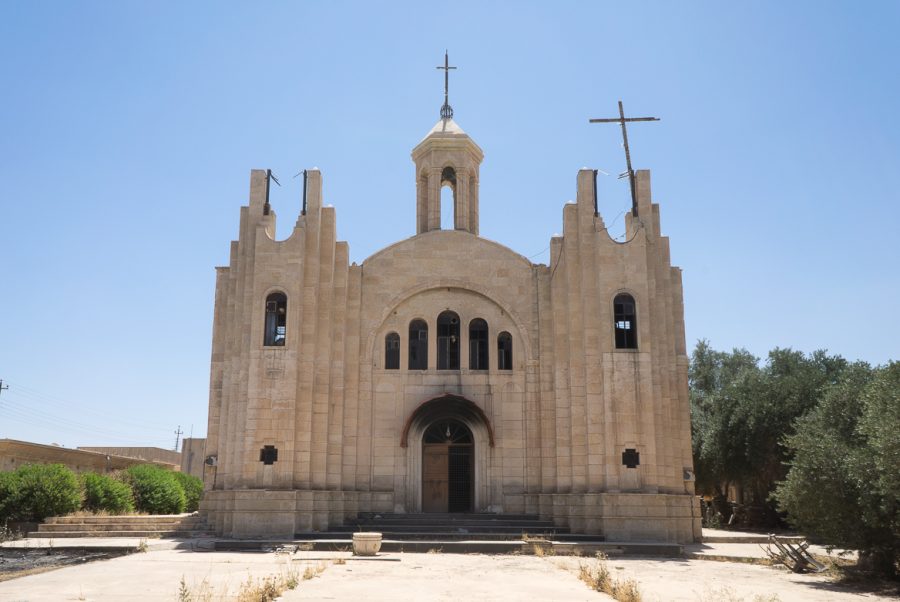Mart Shmouni Church in Bartella
The Syriac-Orthodox church Mart Shmoni in Bartella lies 36°21’6.72″N 43°22’56.81″E and 337 metres high.
It has been profaned and partially burnt by ISIS between 2014 and 2016
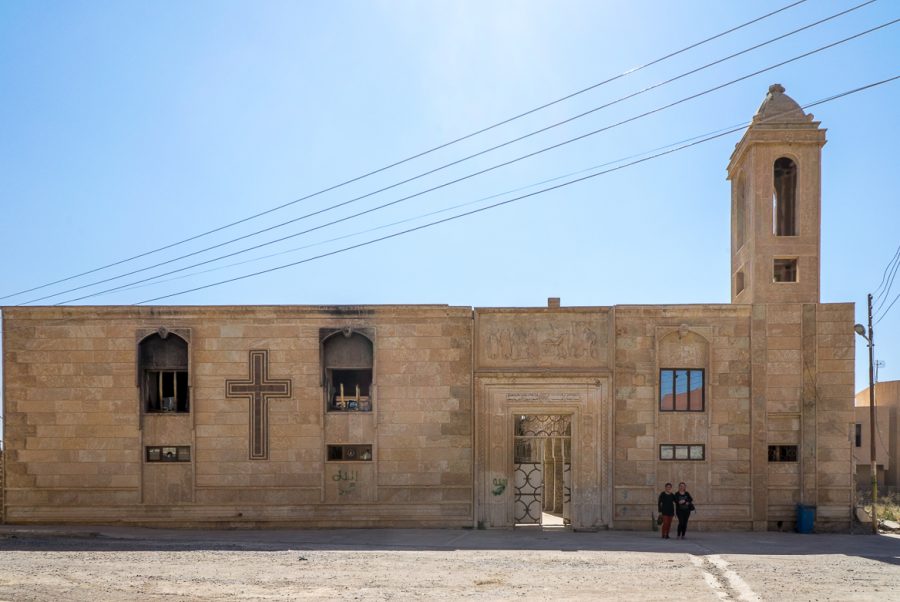
Commonly known as Mart Shmoni, in memory of the saint woman, the church is also known as Bney Shmoni, as a tribute to her 7 saint children.
The story of this Jewish family is related in chapter 7, from the second Book of the Maccabees in the Bible. It reveals how the Jewish were persecuted under the reign of the Seleucid king Antiochus IV Epiphanes, because they respected the Laws of God and already believed in resurrection and eternal life… two centuries before the advent of Christianity.
Location
The Syriac-Orthodox Mart Shmoni church lies 36°21’6.72″N 43°22’56.81″E and 337 metres high in the city of Bartella. East from the Tigris River, and west from the Khazir River, Bartella is just a few kilometres up north from Karamles and Baghdede (Qaraqosh).
With Erbil 60 km south east, and Mosul, 20 km south west, Bartella lies right in the very heart of the Syriacs’ plain.
The name of the village seems to come from Bét Bar Telli ou Bét Tarlaï, the “famous village under the mountain”, and known from the 6th-7th century.
Fragments of history
Traces of population in Bartella probably go back to Antiquity. An archaeological tell (hill), sized 9 metres high, 42 metres long and 34 metres wide[1] is considered by historians to be contemporary of Alexander the Great…
Bartella was a large village of more than 15000 inhabitants[2] in 2014, before ISIS attacked, with a mixed population, such as Syriac Christians and Shabak Muslims. In 1965, there were “4266 inhabitants, all Syrians[3]” and in 1891 they were 900, 2/3 were Orthodox and 1/3 was Catholic.
At the beginning of the 7th century, the Christians from Bartella adhered to the Church of the East. They turned gradually to the Syriac-Orthodox church under the influence of preachers from the great Mar Matta monastery, which was just 15 km away up north, north east. Since then, Bartella never stopped supplying maphrians, patriarchs and bishops, in such an extend that it is now considered as the Syriac-Orthodox “capital city” in the Nineveh plain. This situation also gave birth throughout the centuries to many internal governance disputes.
Just like all other Christian villages in the Syriacs’ plain, Bartella endured its bunch of plundering, wreckage and plagues. Nader Shah’s troops devastated the village in 1743. During the years 1756-1758, a Bedouin tribe, Albu Hamad, did just the same. In 1789, the Yazidi emir, Tšōlō Bek[4], plundered the village again. In 1791, a terrible famine struck the whole area between Erbil and Mosul, including Bartella.
Not so long ago, Dominican sisters still ran a school there in 2014, just before ISIS invaded the town.
The former Metropolitan of the Syriac-Orthodox Church Mar Severius Ishak Zakka was born in Bartella in 1931. Consecrated as Metropolitan in February 1981, he died in December 2011.
In the 12th century, there were 2 convents in Bartella, and almost nothing of them remains today. The first one was the monastery of the Forty Martyrs, where the most famous Maphrian Gregory Abū’l Faraj Bar Haebraus, maphrian from 1264 to 1286. His well-known Chronology describes the Mongols’ arrival in the region. The second one was Mar Youhanna Monastery (Youhanna Ben Nagere), where monks still lived in at the end of the 16th century.
There used to be up to 6 churches in Bartella. The two most ancient are totally ruined and inexistent today. The great Mar Ahudemmeh church, whose exact place is impossible to pin point today, used to host the maphran’s cell. The church’s stones have been reused to build Mar Giwargis church. Mart Mariam church, whose presence was confirmed from the 16th century, has been completely renovated in 1890. And lastly, the old and the new Syriac-Catholic Mar Giwargis churches, built in 1934 and which adjoins Mart Shmoni church, described in this note.
[1] In La Turquie d’Asie, Vital Cuinet, Éd. Ernest Leroux, Paris, 1891, p.830-831 & Assyrie chrétienne, vol.II, L’Institut de lettres orientales de Beyrouth, 1965, p. 417
[2] In Qaraqoche ou la disparition des Chrétiens de la plaine de Ninive, Christian Lochon, honorary director of the studies at CHEAM, Bulletin de l’Œuvre d’Orient, 2015, p. 138
[3] Id. note 1, p. 416
[4] Id. p.428
Fragments of a hagiography
The hagiography of Mart Shmoni and her seven saint children is very well known throughout all the Christian East in Mesopotamia. The story of this Jewish family is related in chapter 7, from the second Book of the Maccabees. It reveals how the Jewish were persecuted under the reign of the Seleucid king Antiochus IV Epiphanes, because they respected the Laws of God and and already believed in resurrection and eternal life… two centuries before the advent of Christianity.
The seven Maccabees brothers were then “arrested with their mother and forced to eat pork[1]” in order to abjure their faith. All refused and were sentenced to death and killed, one after the other, under their mother’s eyes. The first one was then “horribly tortured, then fried alive in a pan[2] (…)”. Despite her great distress, their mother, Mart Shmoni, encouraged them, one after the other, to remain faithful to the Law of God, until the very last, begging him not to fear the torturer and to “be up to your brothers, accept your death, so that I can come and join you all in mercy.” [3]
[1] In La Bible rendue à l’histoire, Jean Potin, éditions Le Club, Juin 2000, p.616
[2] Id. p.616
[3] Id. p.617, Extrait : 2 Maccabees, 7, 29
Church’s description
Commonly known as Mart Shmoni, in memory of the saint woman, the church is also known as Bney Shmoni, as a tribute to her saint children.
Situated east of Bartella, Mart Shmoni church is very close from the archaeological tell (hill). “This church was created after the church of Mar Ahūdemmeh was destroyed, at an unknown date. It has been restored in 1807, then all wrecked again and rebuilt in 1869” [1], and the inscriptions all around the royal gate confirm these theories. The last restoration campaign took place in 1922.
The religious compound is surrounded by a high wall, built with materials coming from different times: rough pebbles, earth mortar, cement and facing carved stones. This wall is surmounted by a bell tower, right of the gate. Above it, a large fresco, carved on the stone, related the martyrdom of Mart Shmoni and her saint children.
Beyond the surrounding wall, the inner courtyard is lined on the right with cells that open under an arched gallery. Facing the gate, on the other side of the courtyard, the church stands, with its three doors. God’s door is the middle one, also named door of mercy, and on each side, the side doors, one for women and one for men.
The inner structure of the church is typical of Syriac-Orthodox religious architecture with a nave and two side aisles. The central nave leads to a beautiful carved royal gate, in Mosul grey marble, which is adorned with colonnades and flower ornamentation and has two barred windows.
Beyond the gate, in the Holy of Holies (bêma) stands a splendid painted wood high altar, placed right under the apse’s arch, almost backing onto the wall. A narrow ambulatory allows a little passage behind the altar. In the heart of the shrine, looking up, a very nice slender and finely crafted vault can be observed.
Naturally, on each side of the royal gate, the side doors, much lower and less decorated, give access to the side altars.
Along the walls of Mart Shmoni church can be admired a lot of reliquary niches, with patterns and inscriptions in Syriac language. This blossoming of votive inscriptions shows the importance of this building in the Syriac-Orthodox community’s history.
There is also the very ancient octagonal baptismal font of the church, which is now situated under a staircase in the courtyard of the building. Dated 1343, it comes from the village Bar Sakhra (1343) which used to be a Christian village. Some Syriac inscriptions can be found there about its use and creation[2].
Left from the church, a gate opens onto the cemetery. On the right, beyond the surrounding wall, a large community complex has been built in the early 21st century.
The whole site, including the church, has been defiled, profaned and partially torched by ISIS occupiers between 2014 and 2016.
Mart Shmoni church used to possess some ancient manuscripts that have been read by Jean-Maurice Fiey in his day.
In accordance to the ancient Syriac calendar, the patron saints of the church, Mart Shmoni and her children, are celebrated on October 15th
[1] In Assyrie chrétienne, vol.II, Jean-Maurice Fiey, L’Institut de lettres orientales de Beyrouth, 1965, p430
[2] « This font was fashioned in the year (1-5) 1654 of the Greeks during the days of our Father Mōr Grīgōriōs Mattai Hānō the First », in Recueil des Inscriptions Syriaques, Tome 2, Amir Harrak, texte p.187, photo p.69, index AB.01.01 A & B.
Monument's gallery
Monuments
Nearby
Help us preserve the monuments' memory
Family pictures, videos, records, share your documents to make the site live!
I contribute